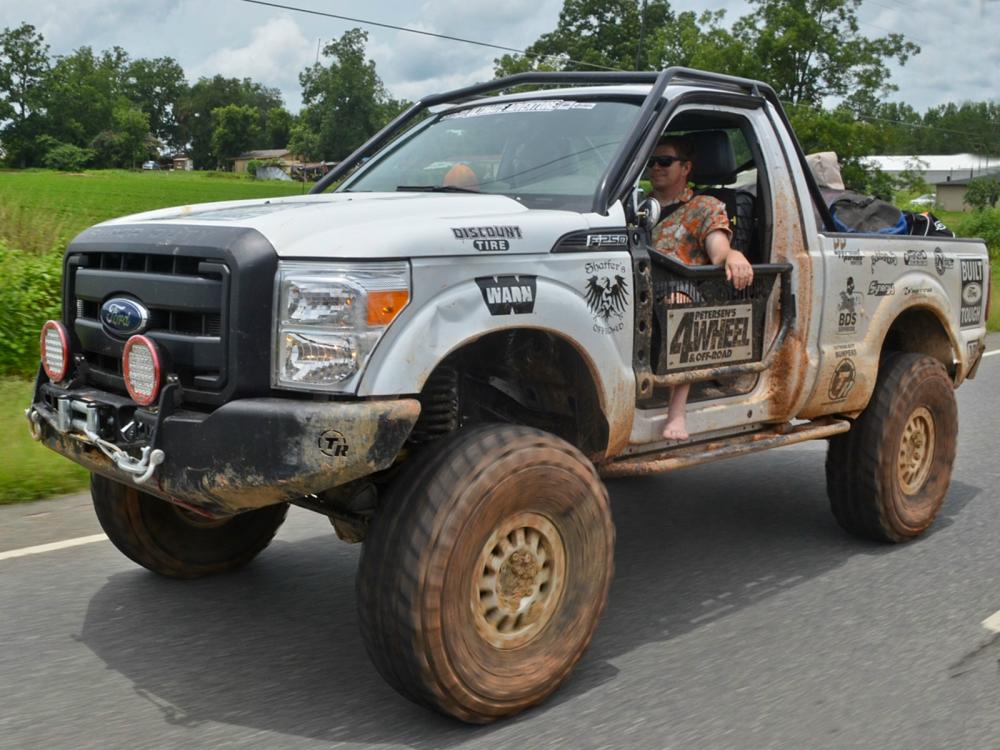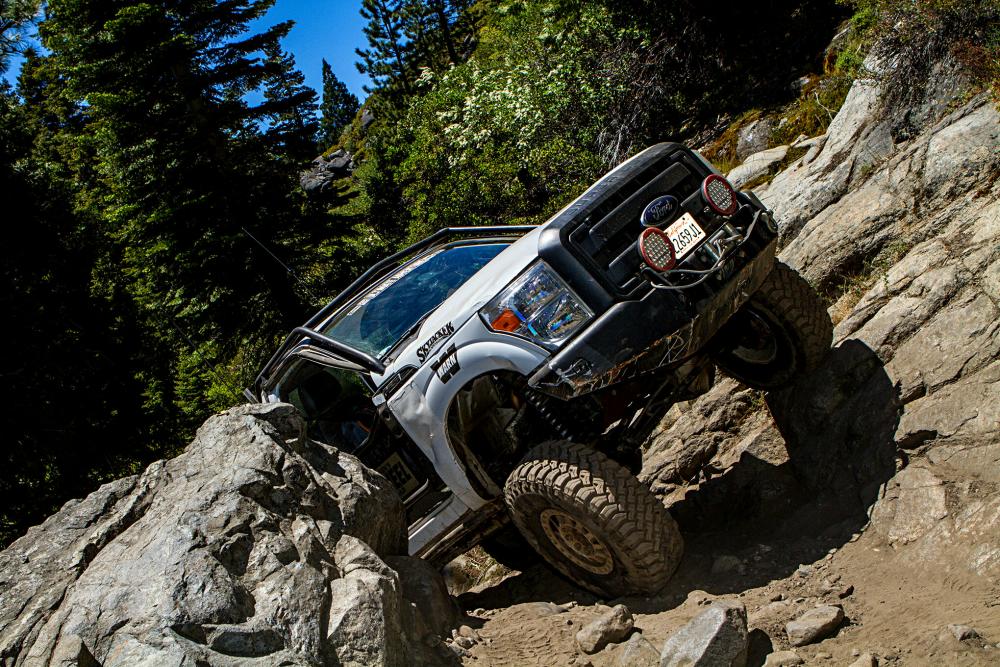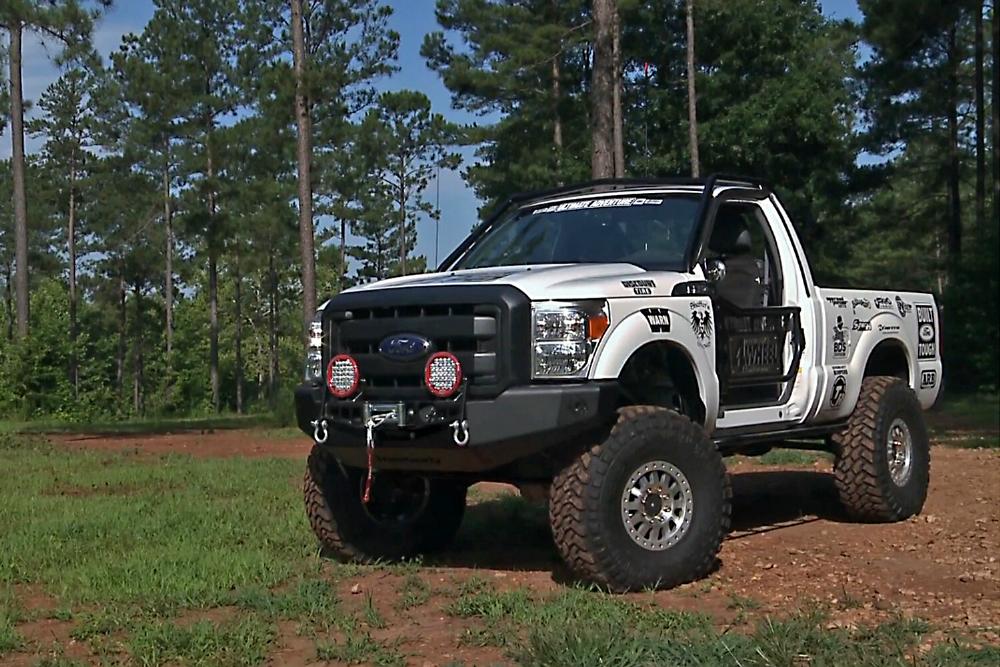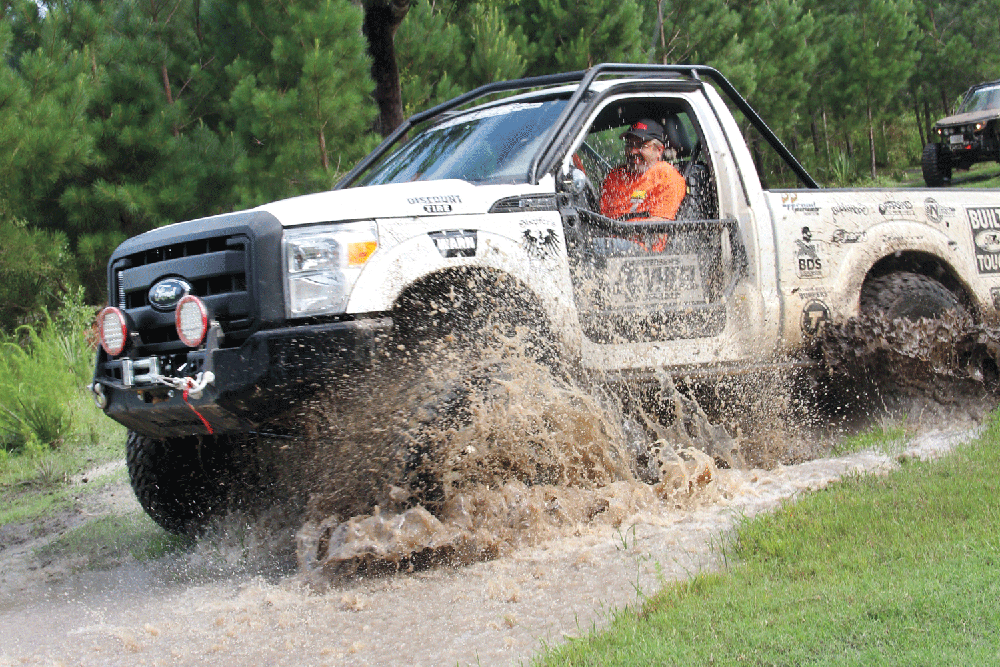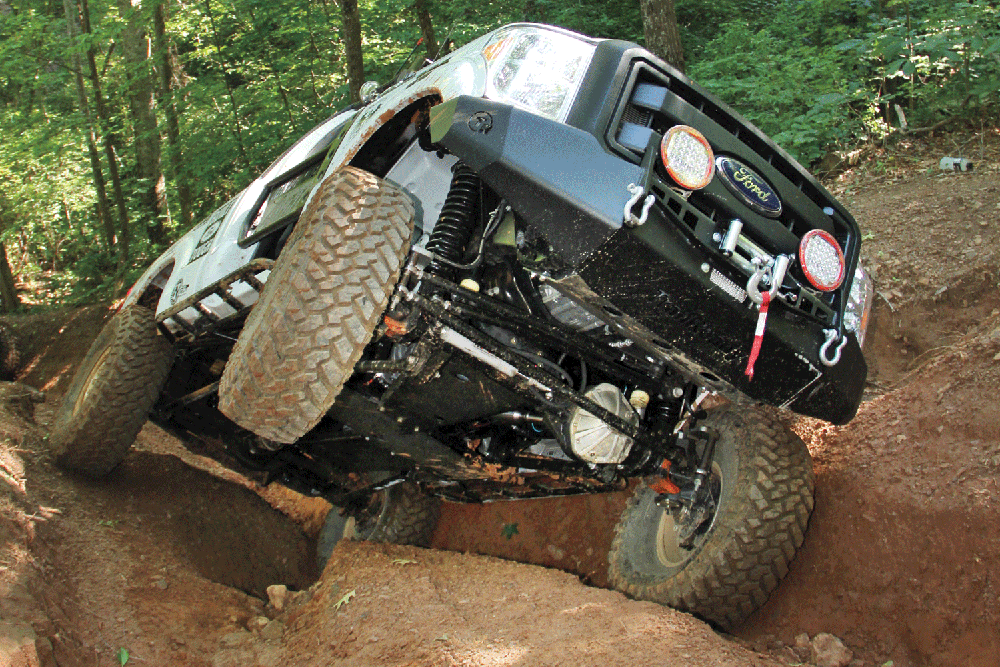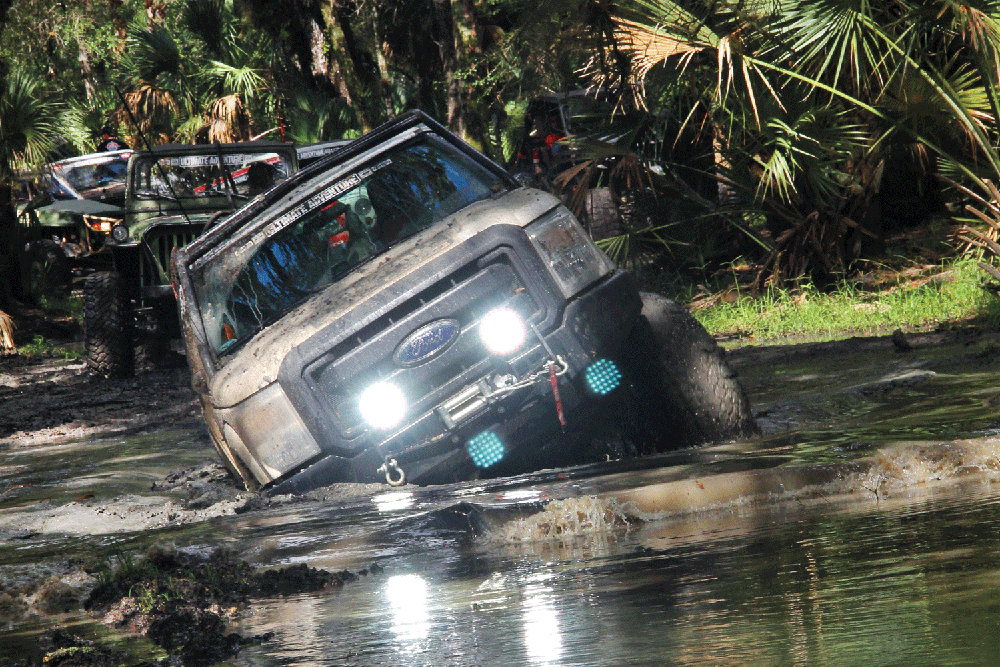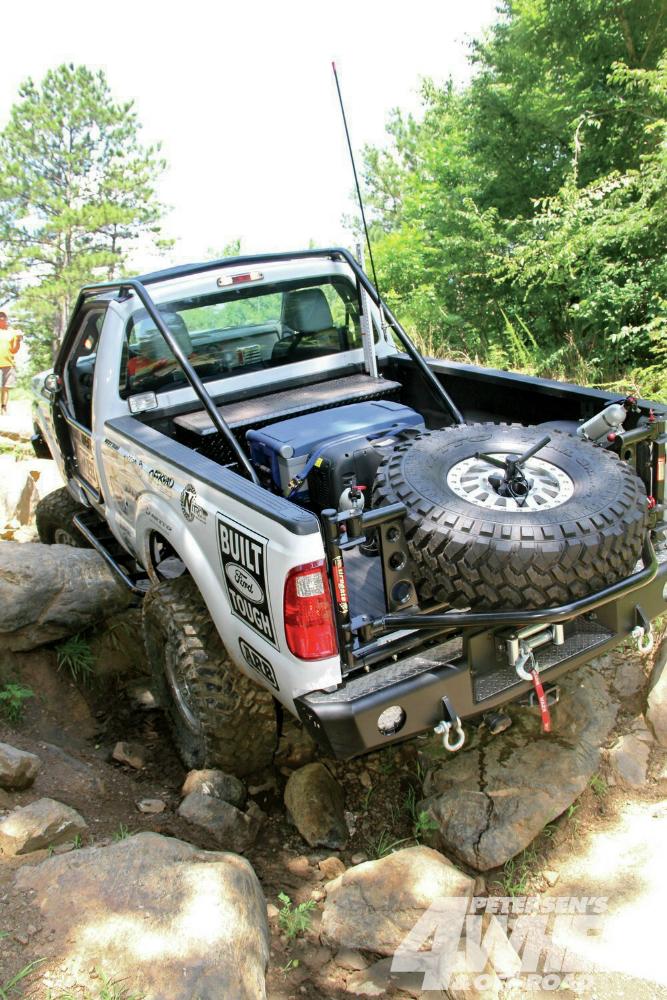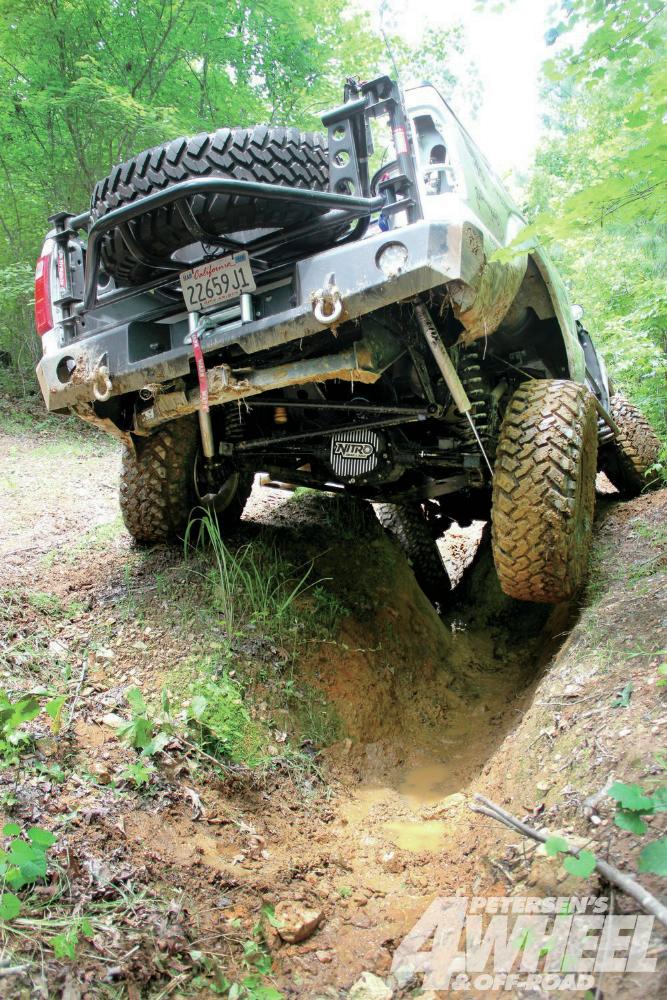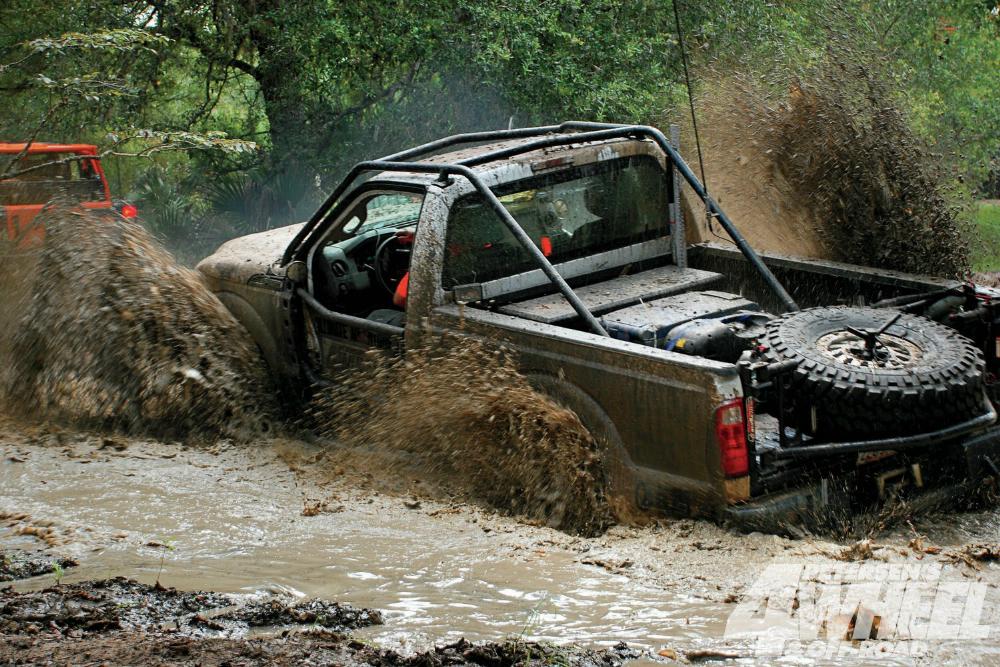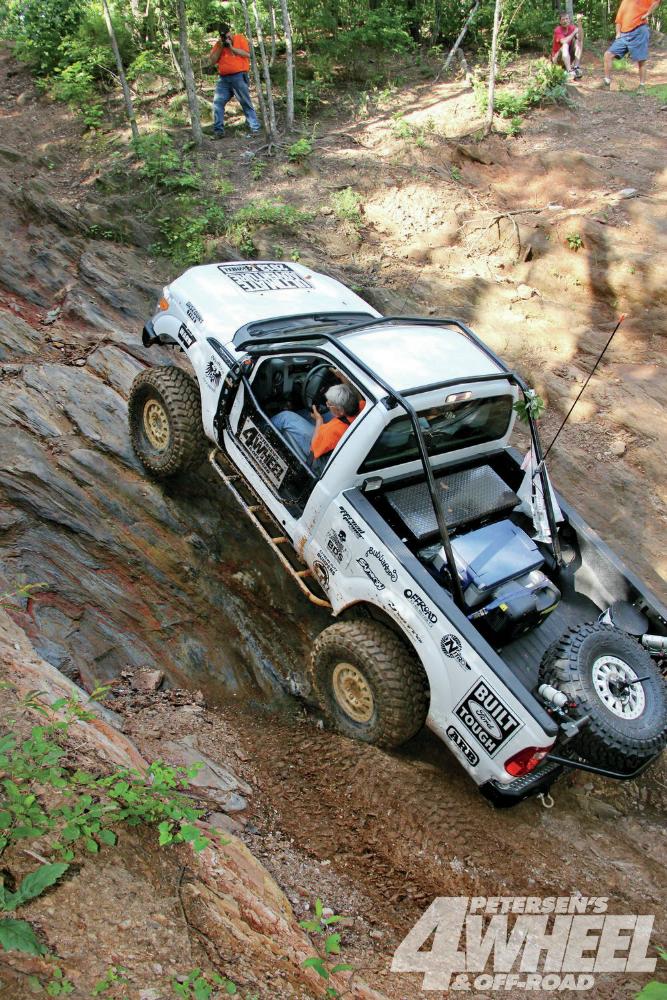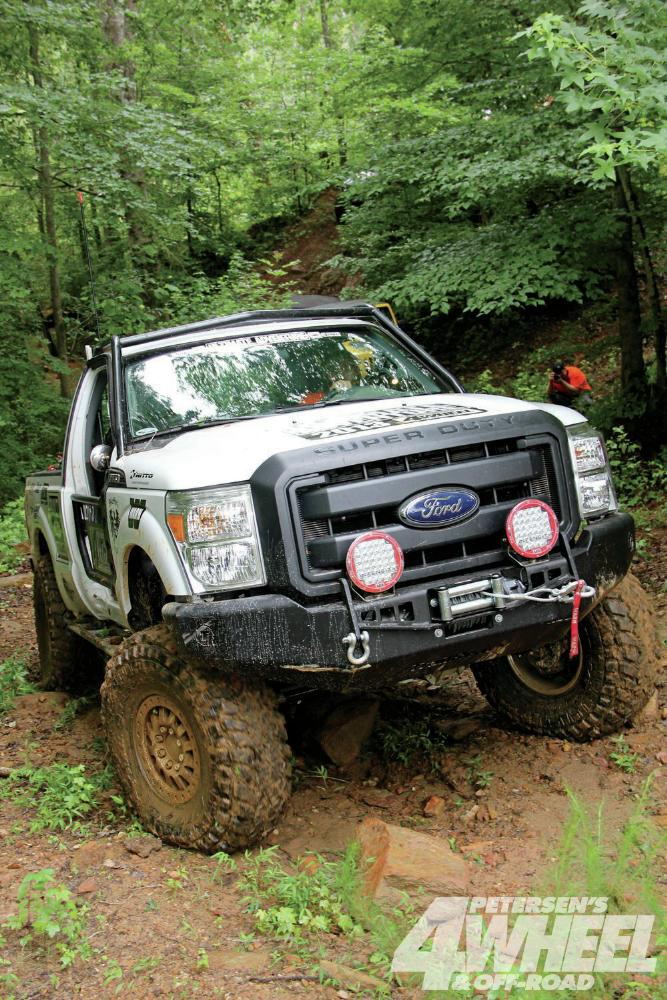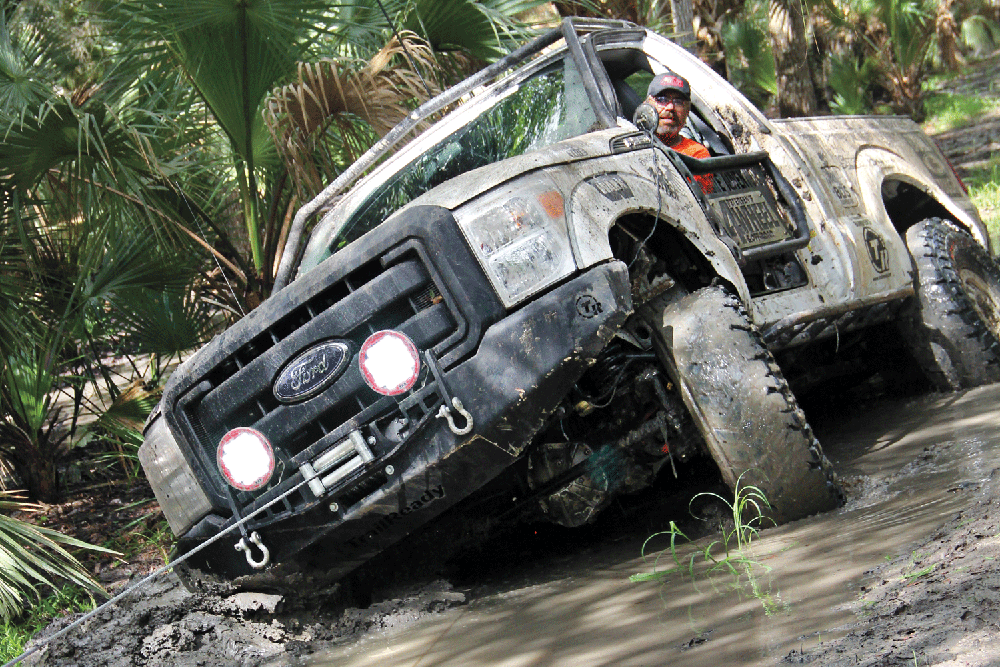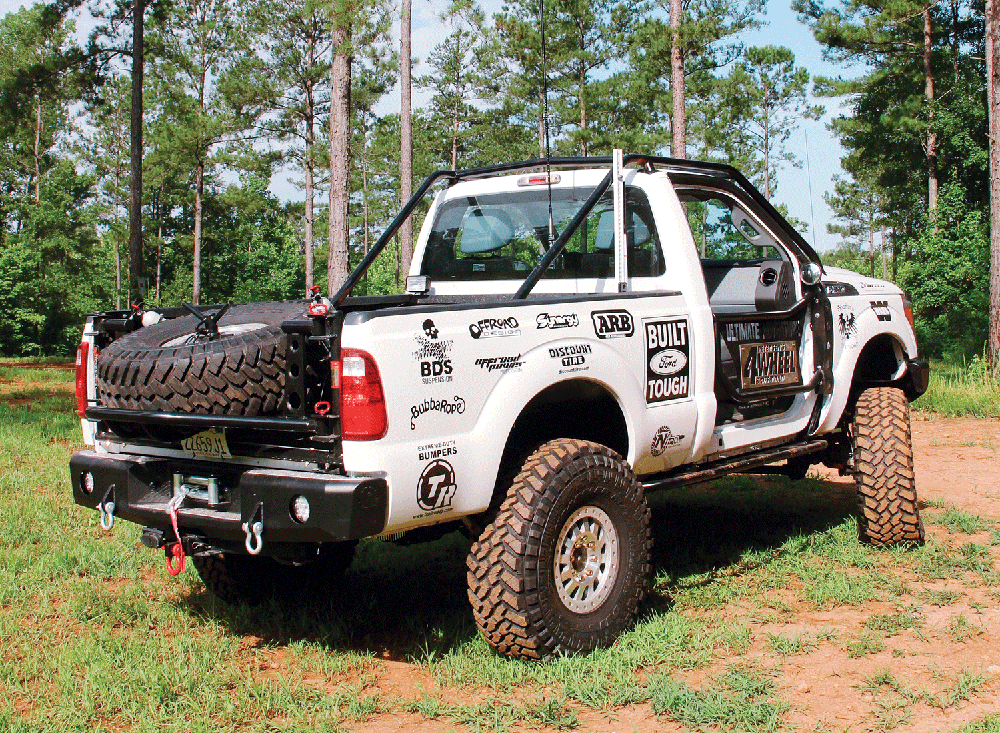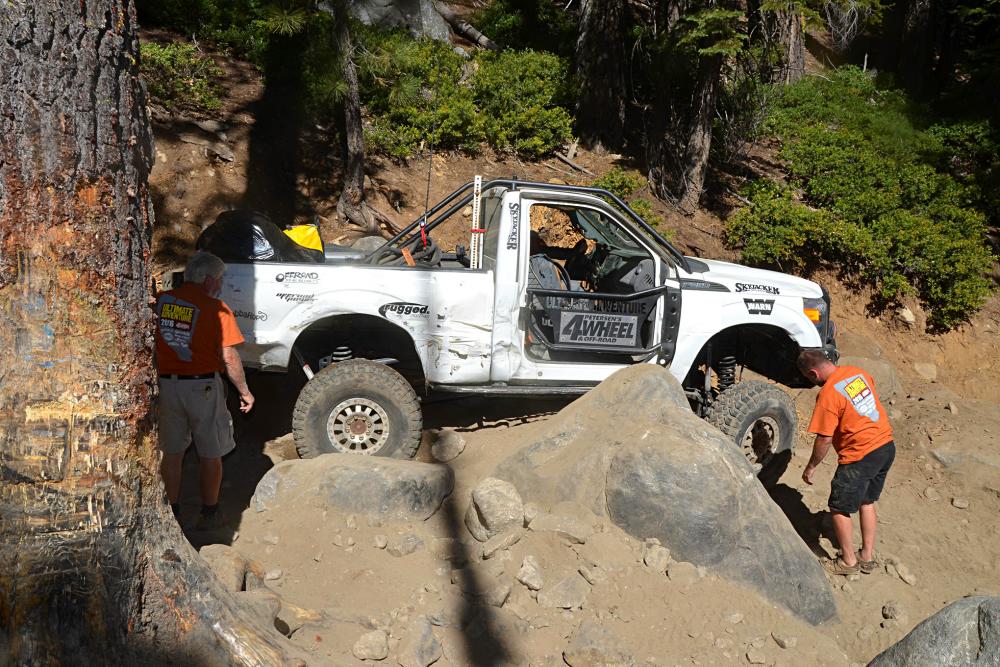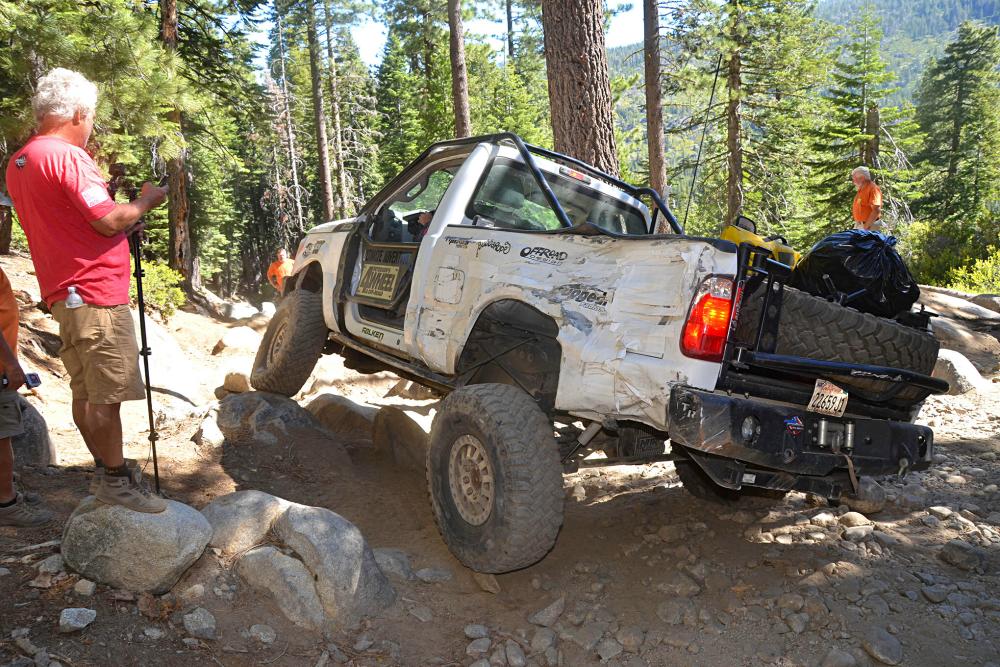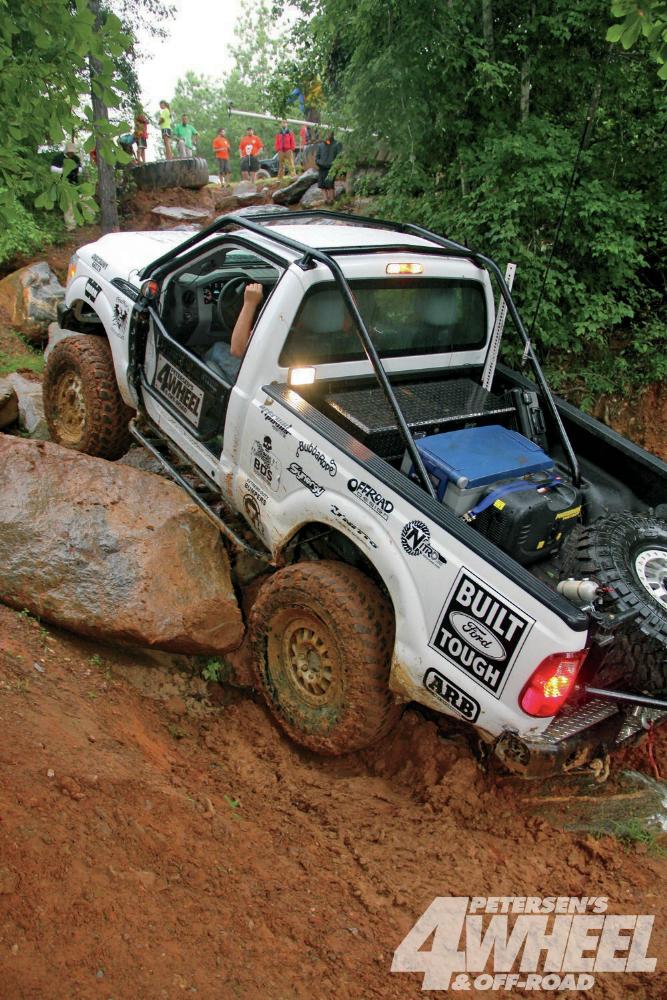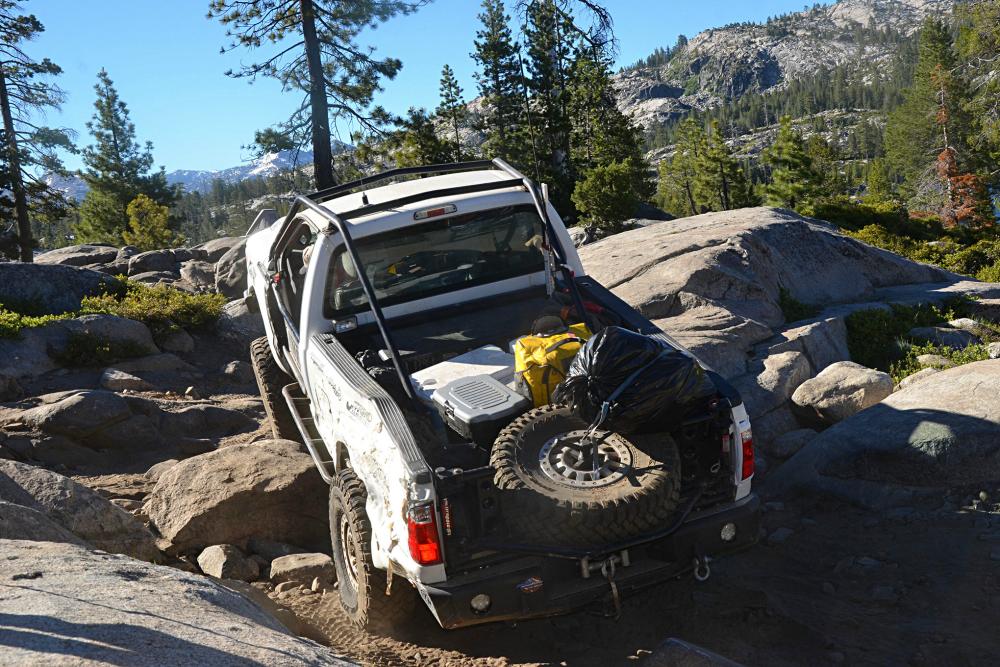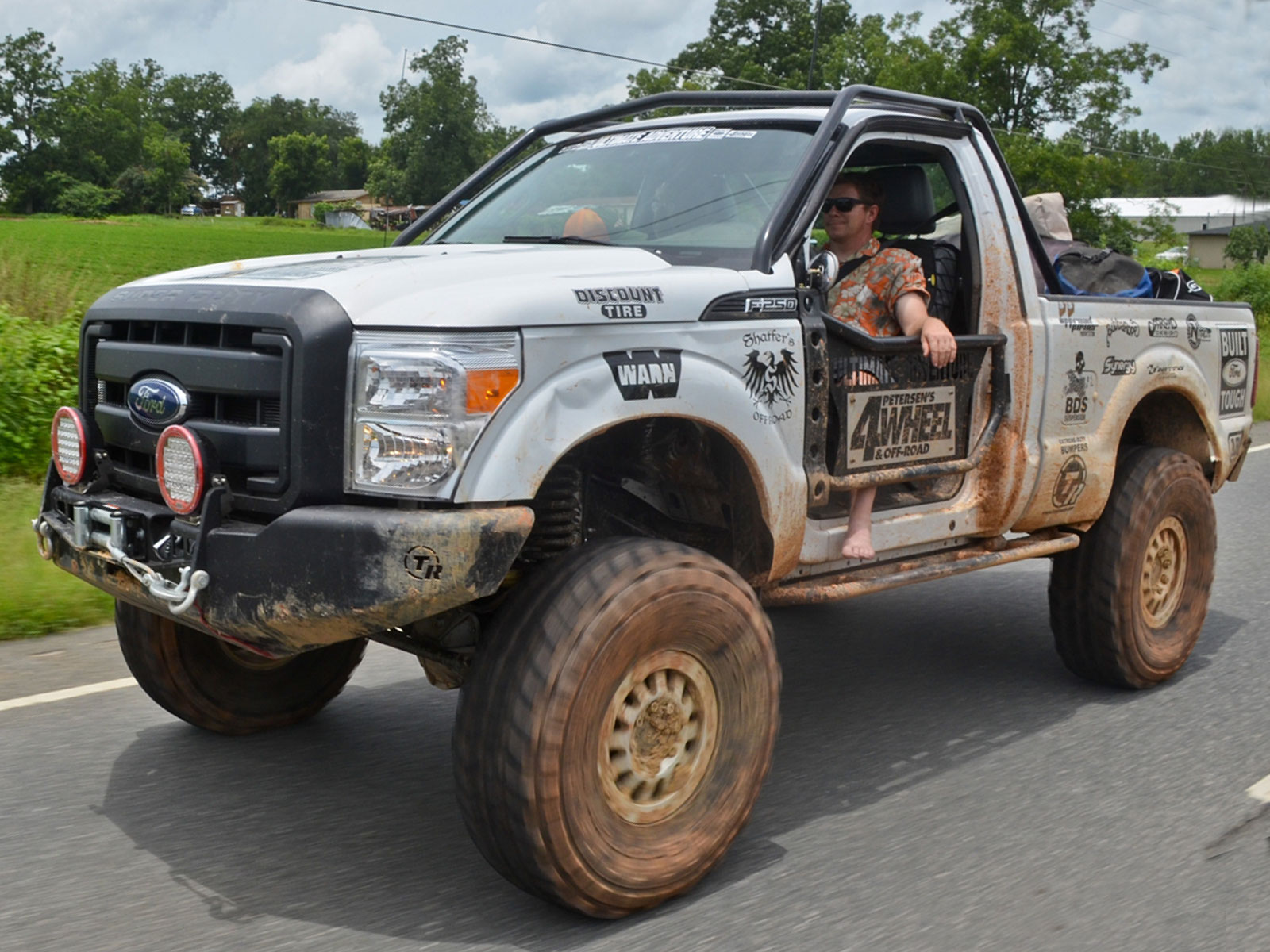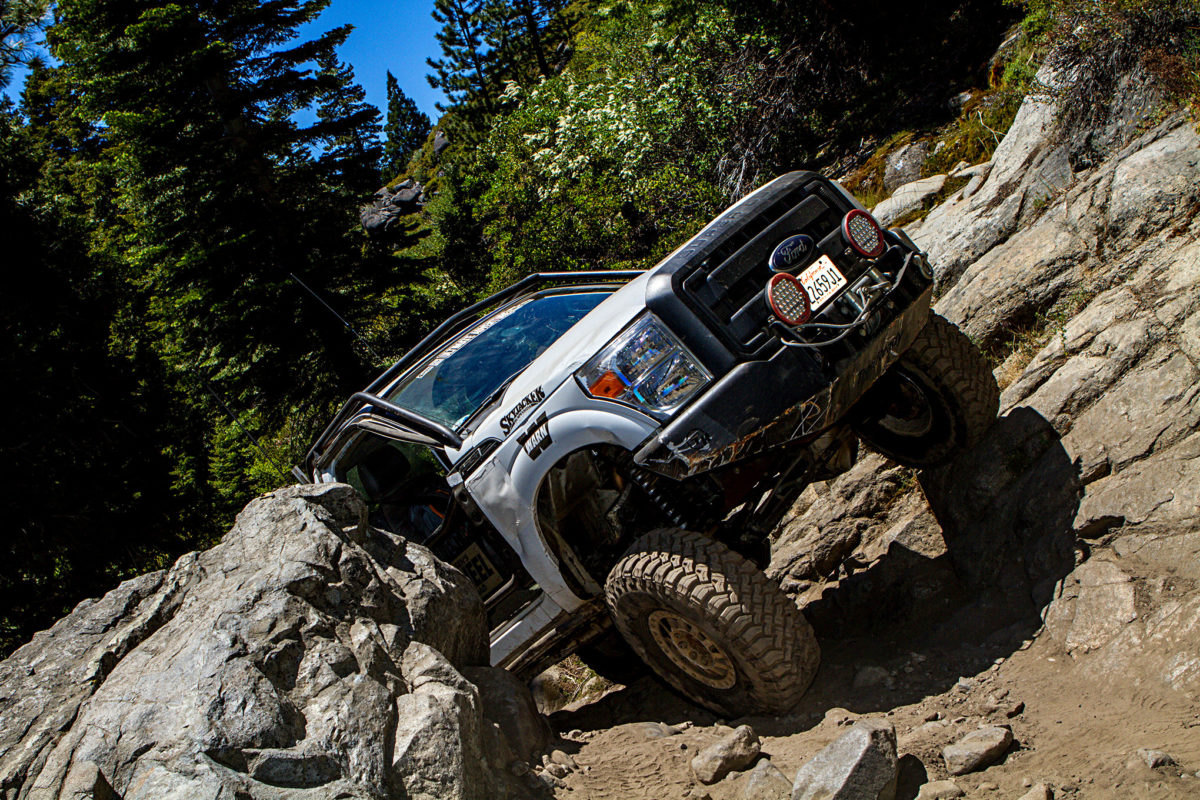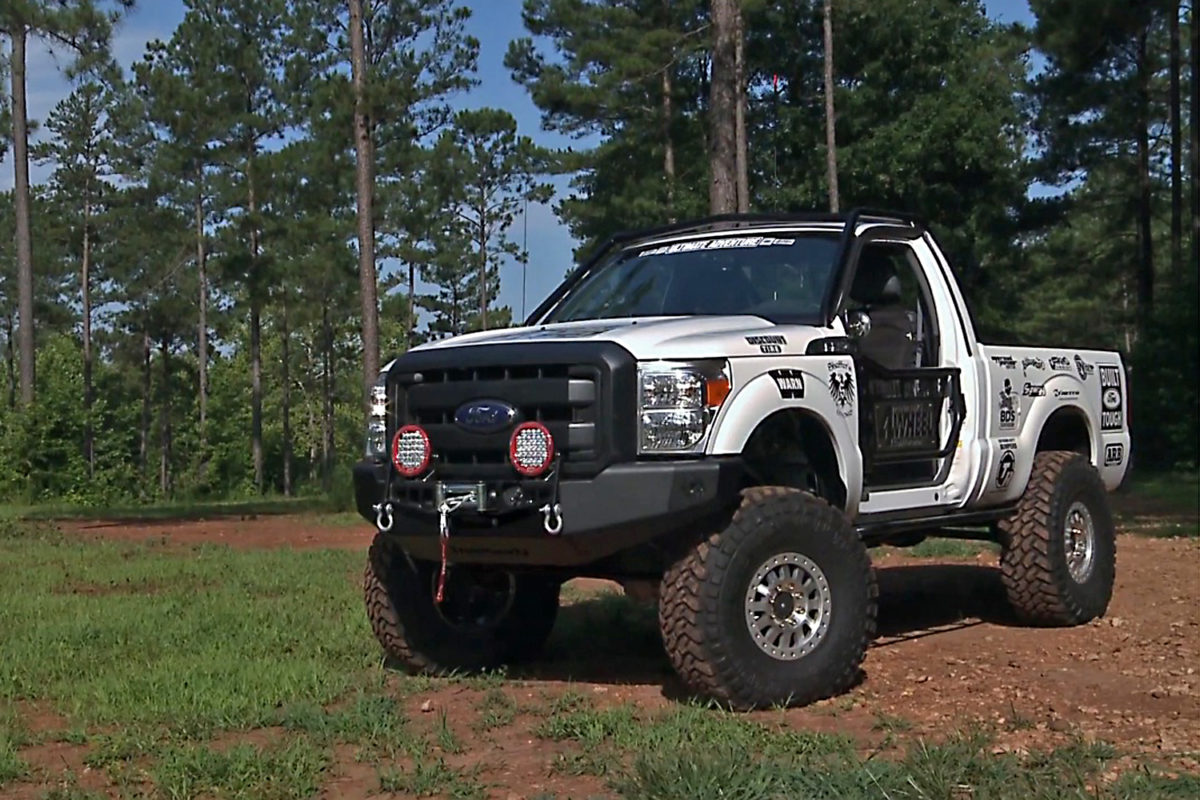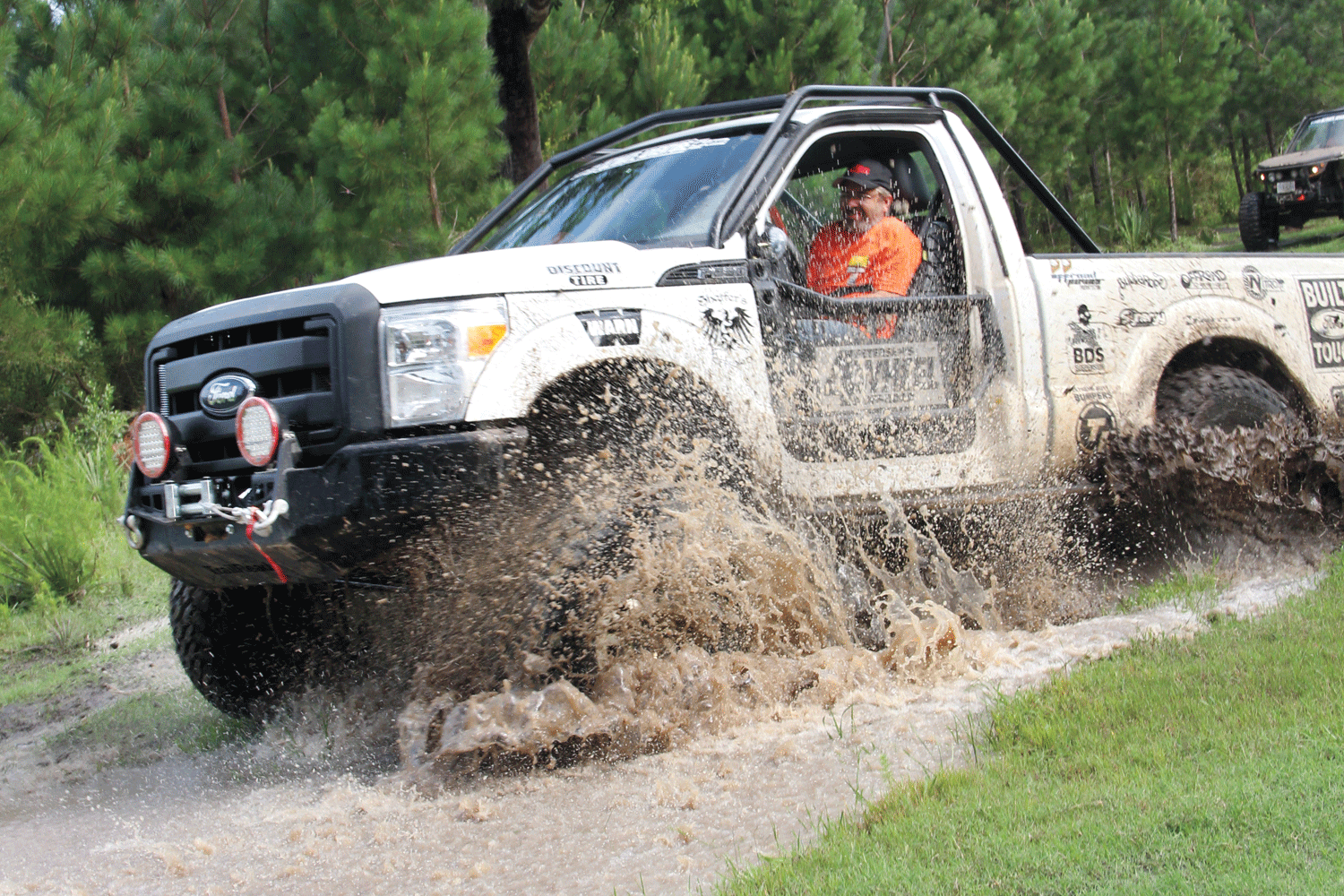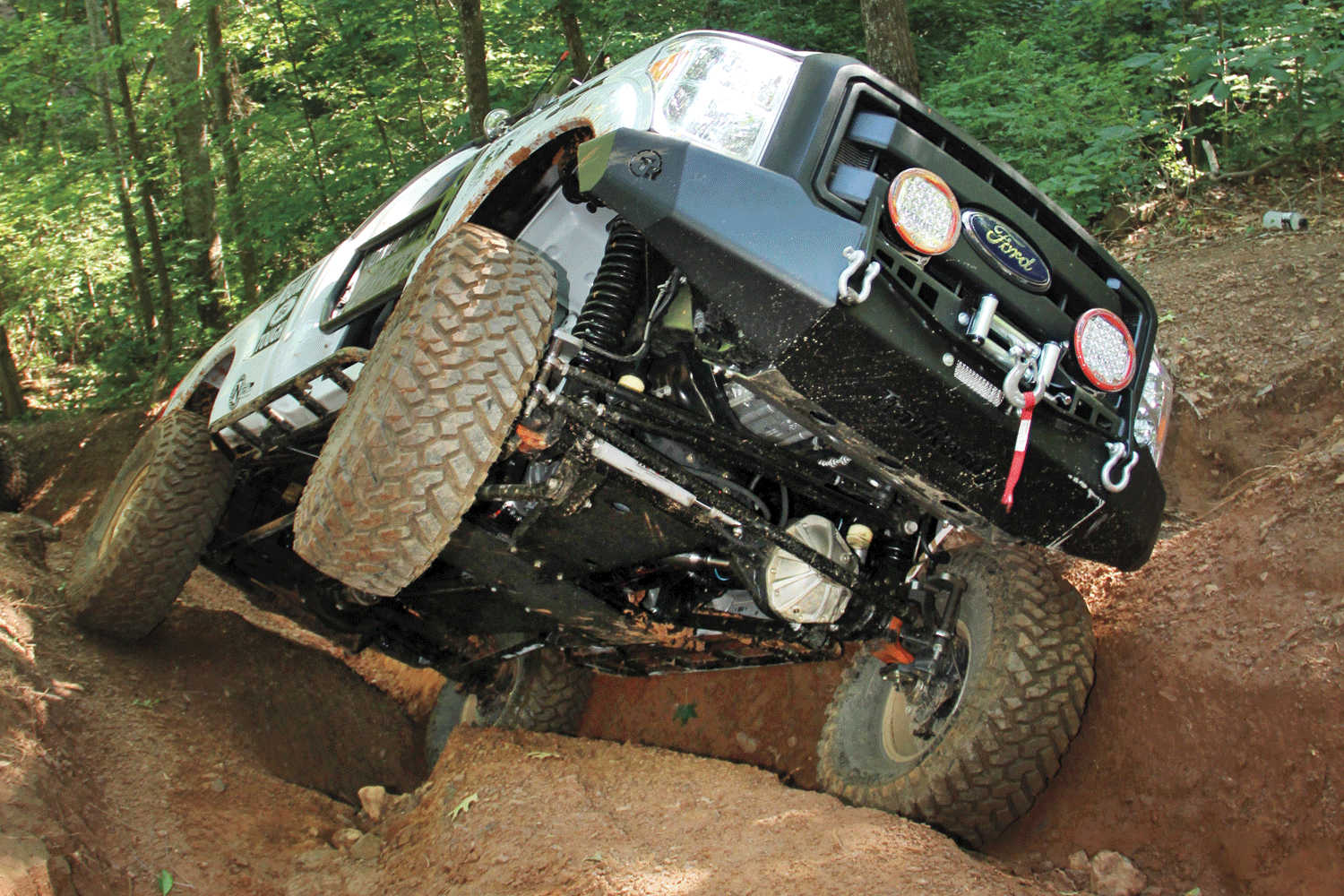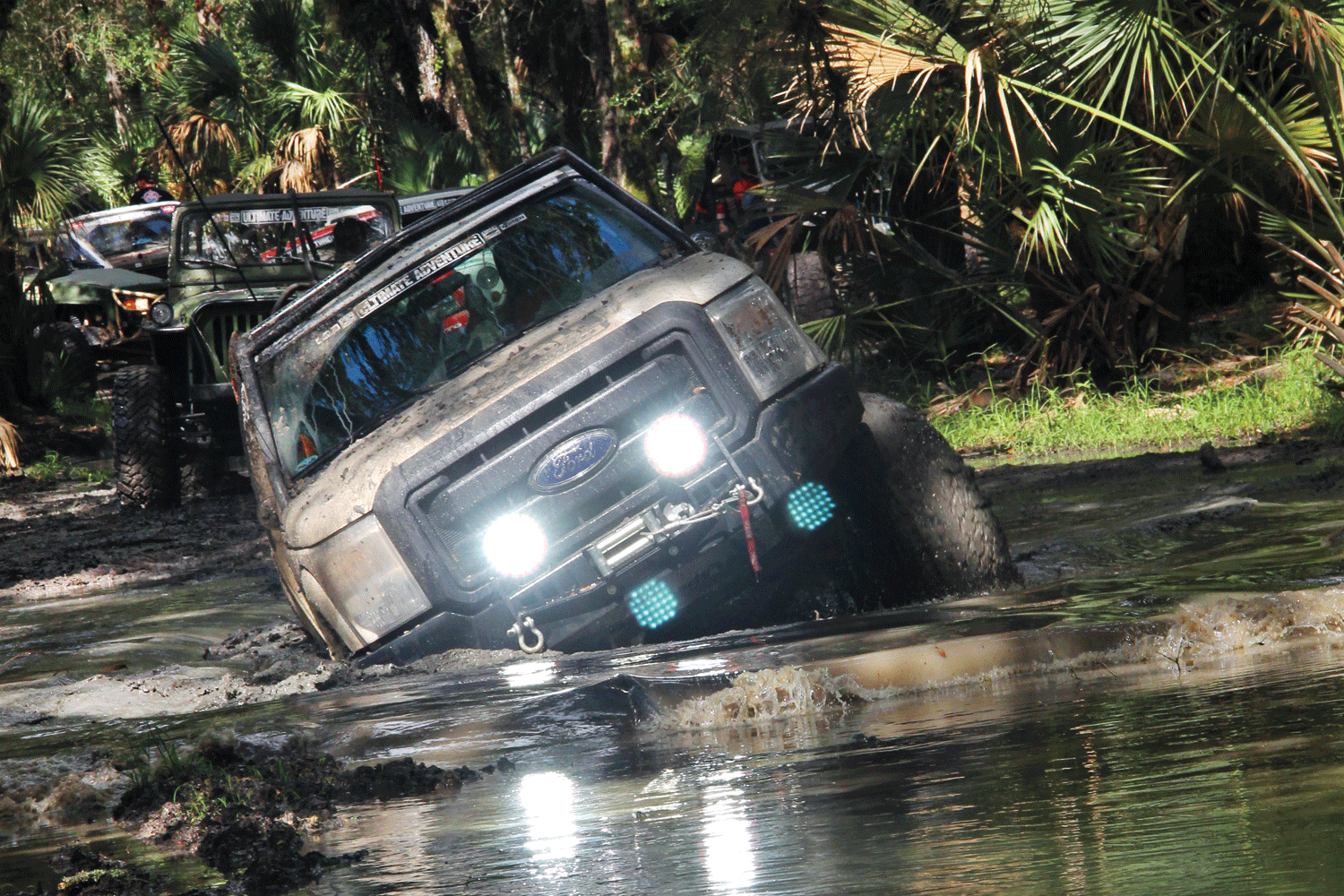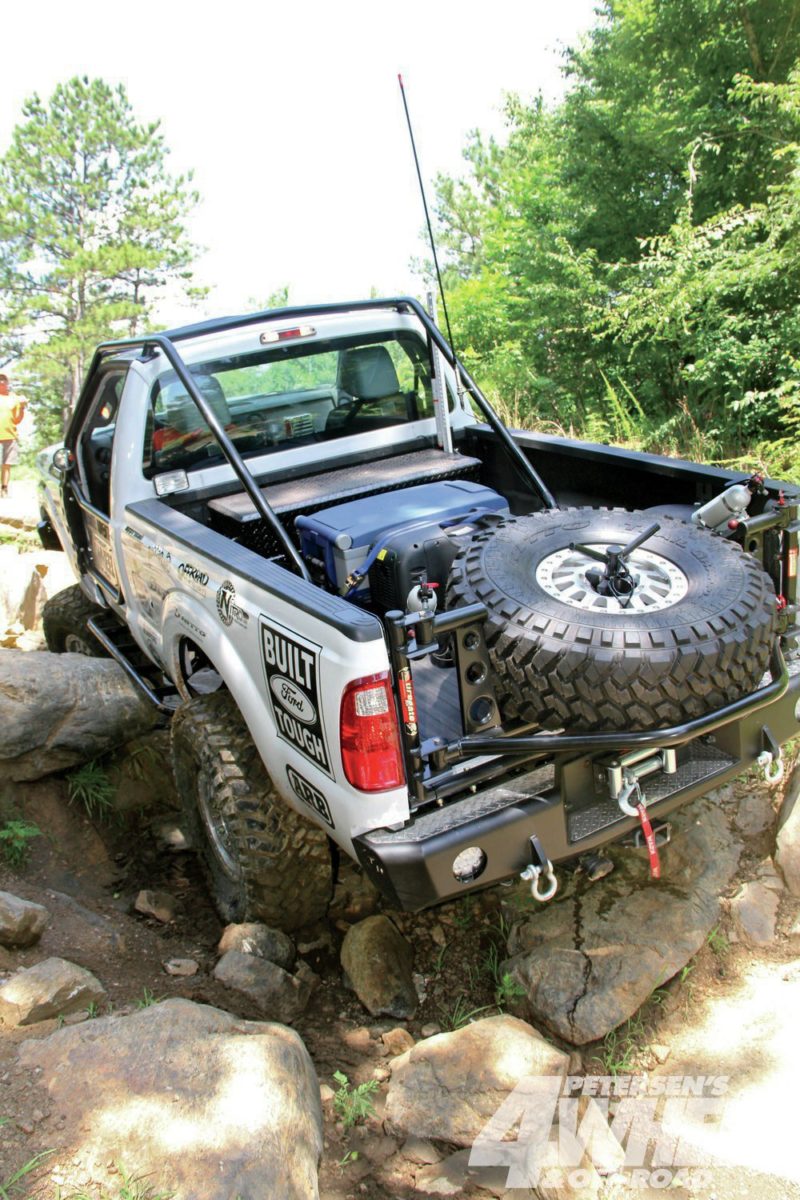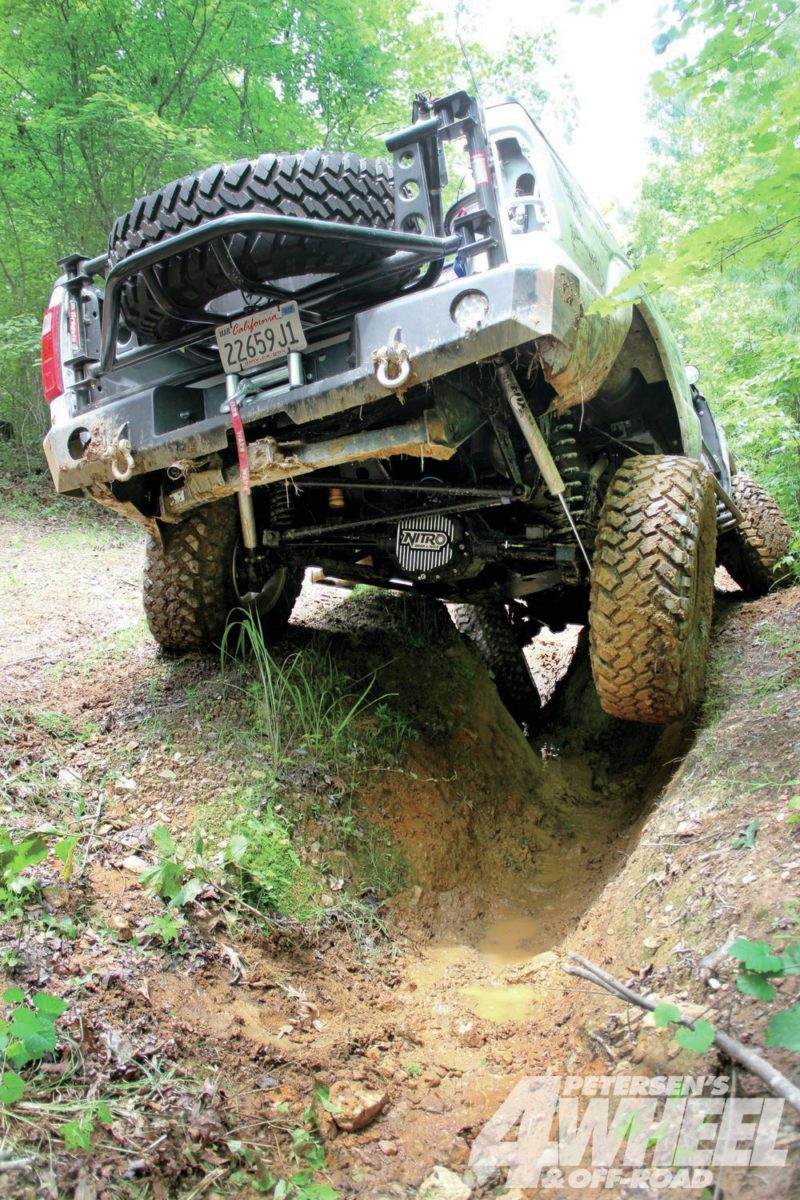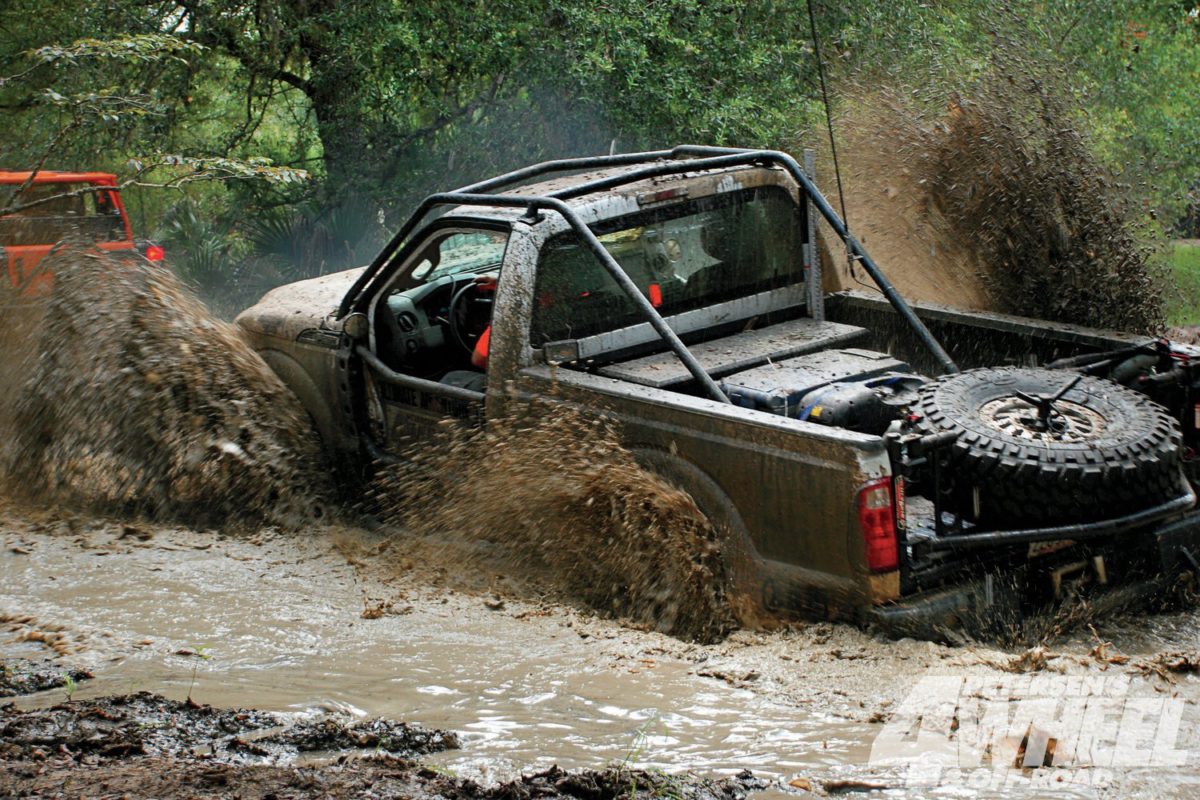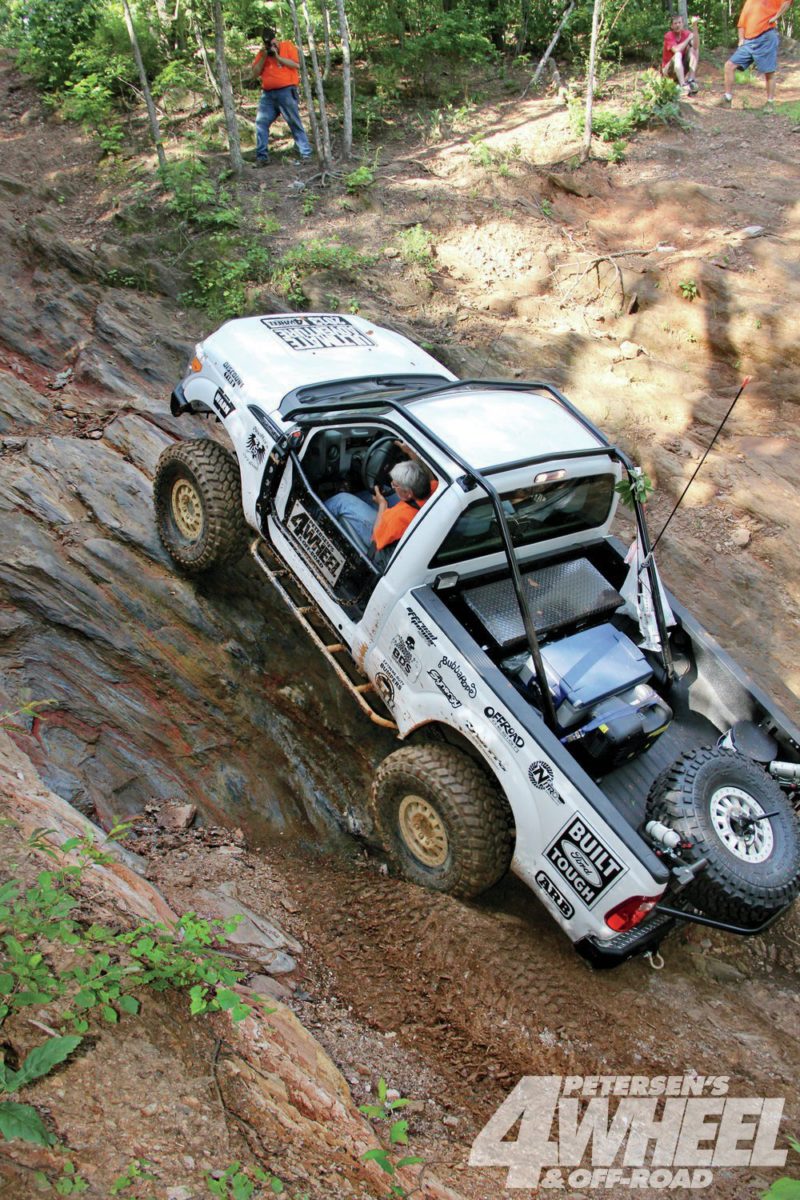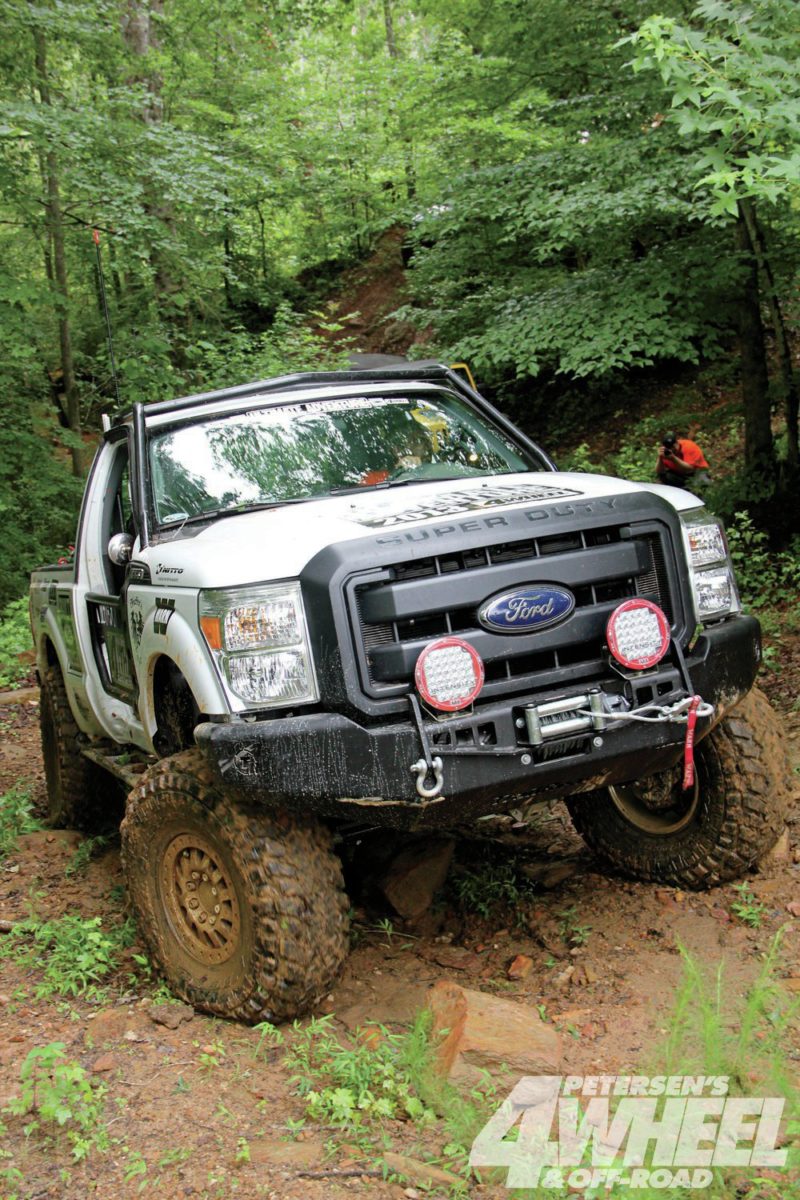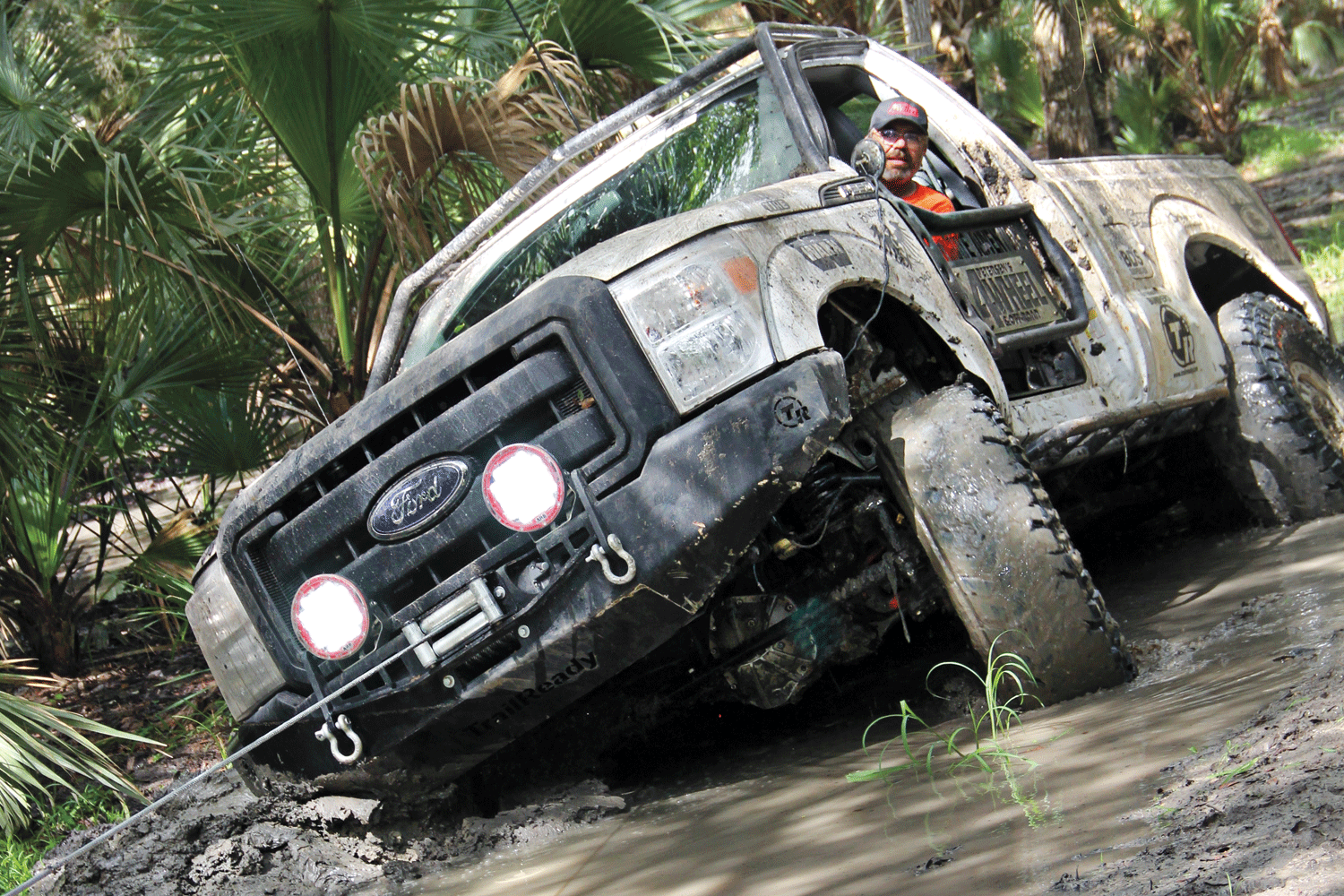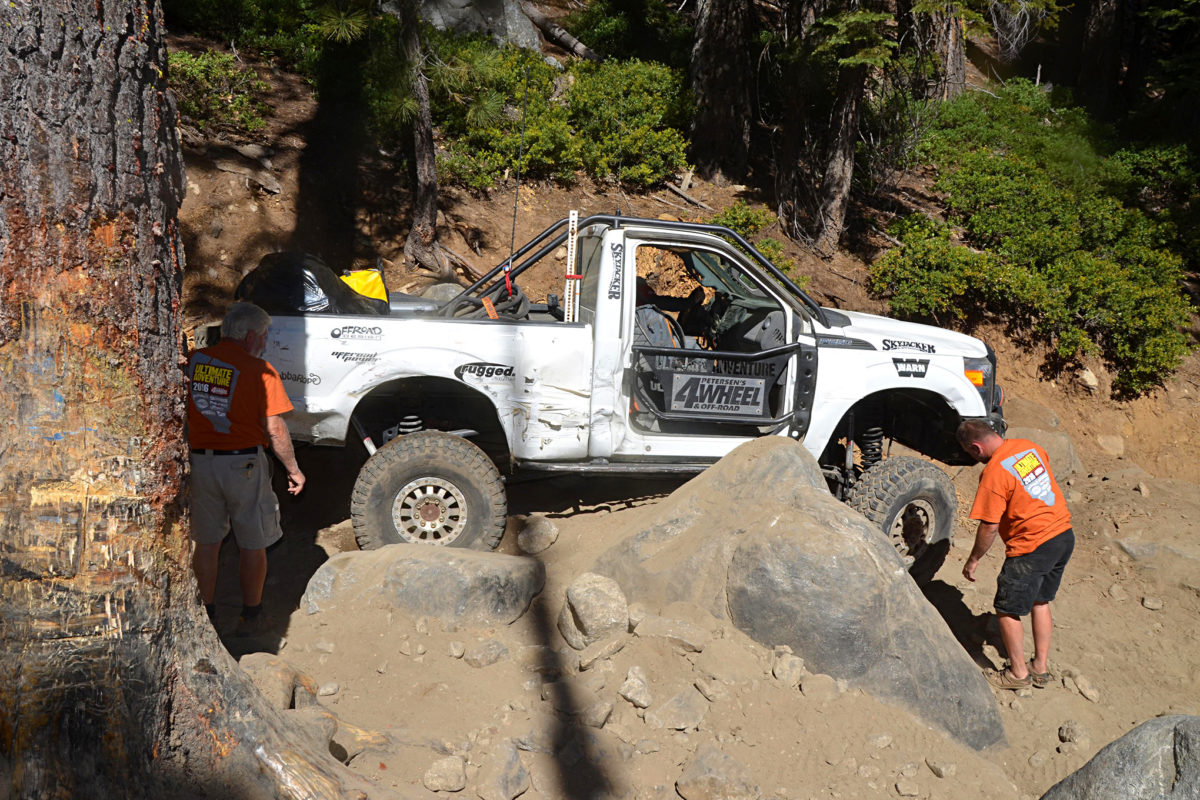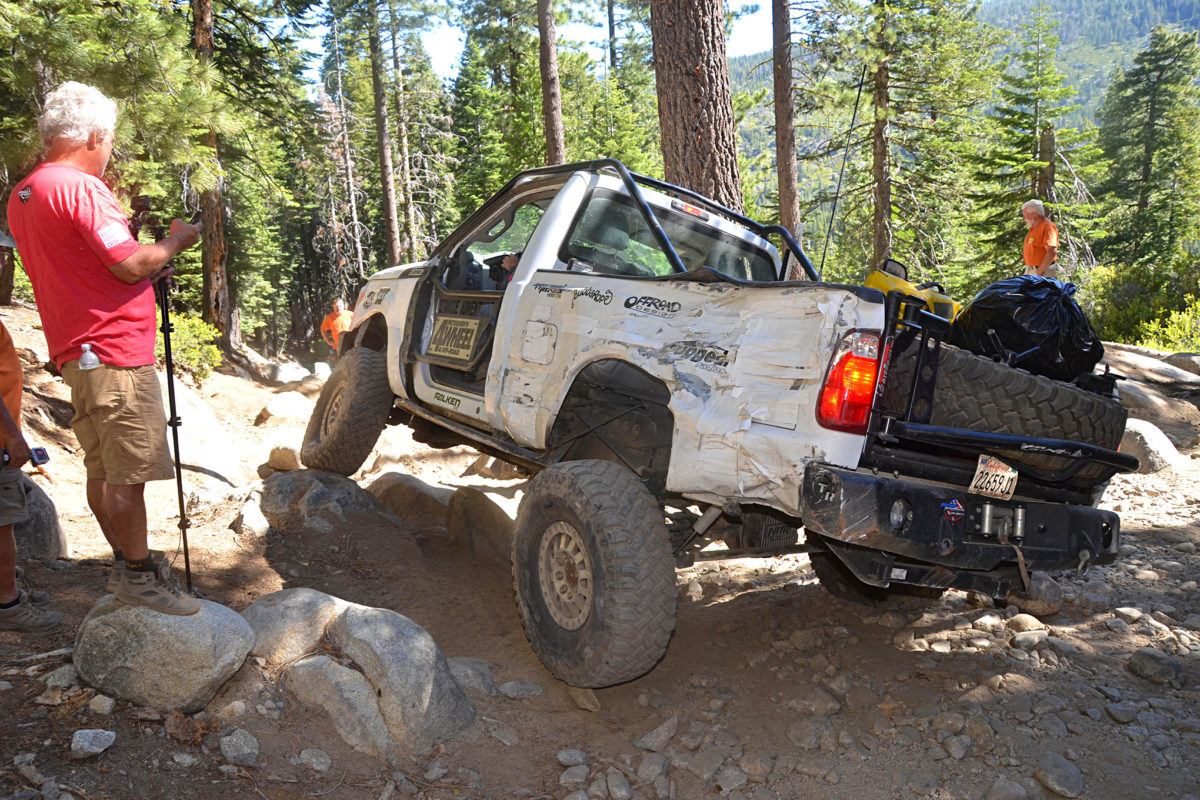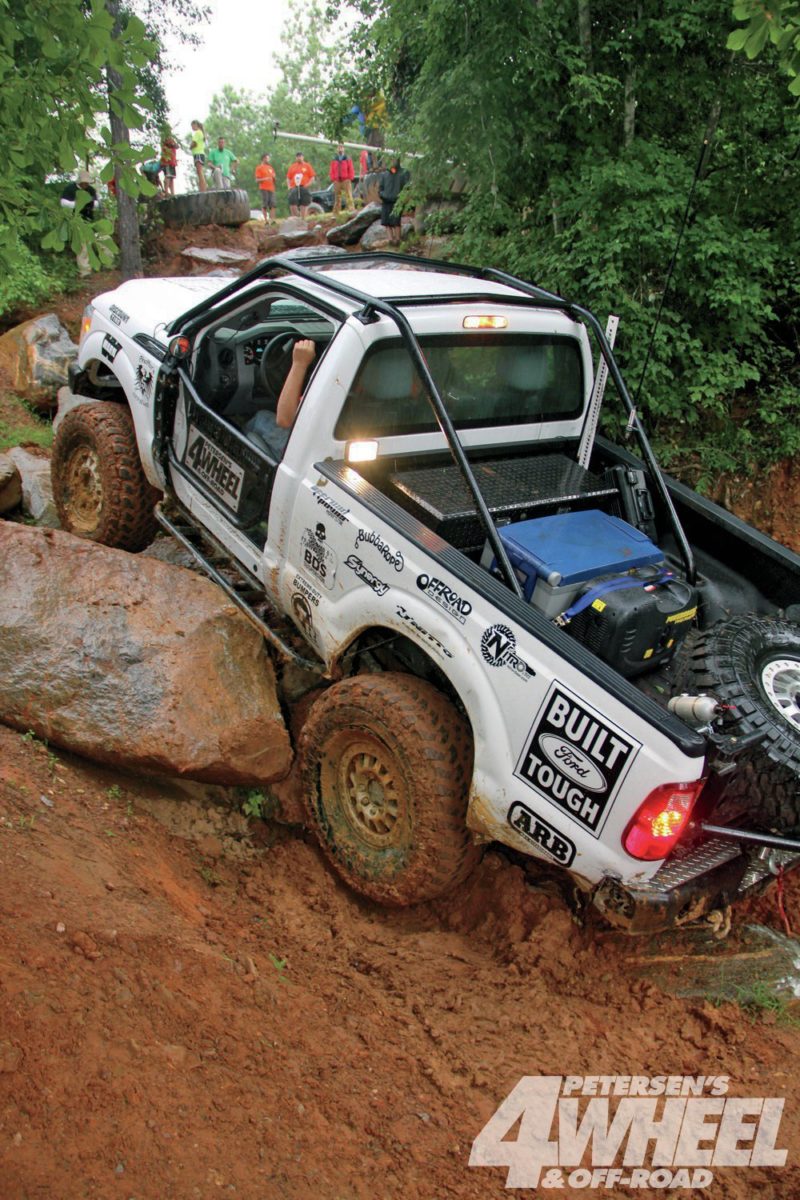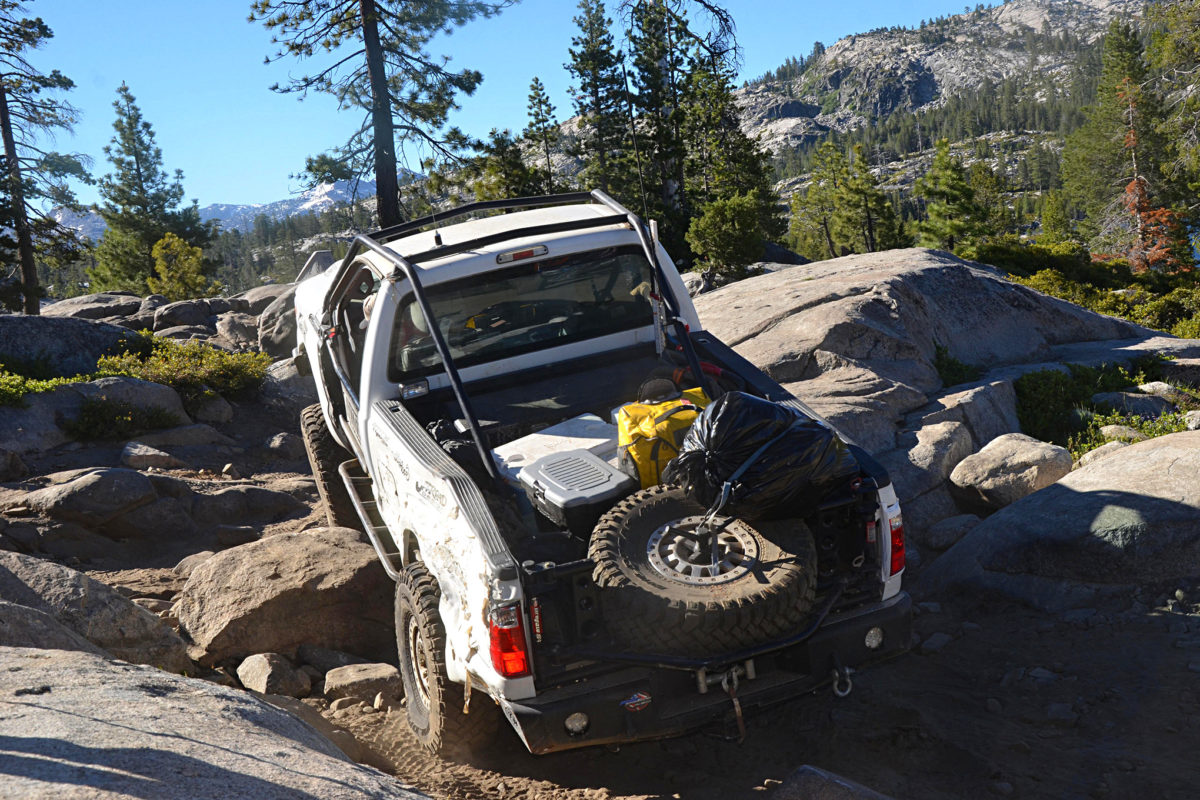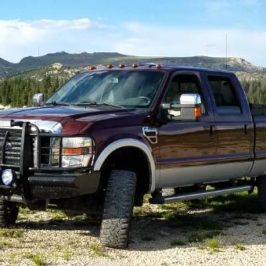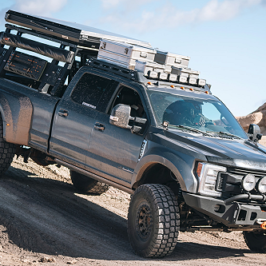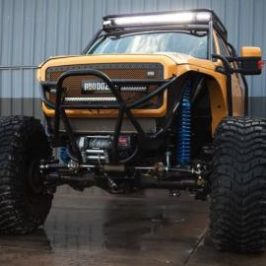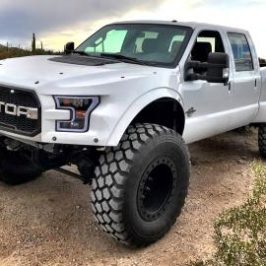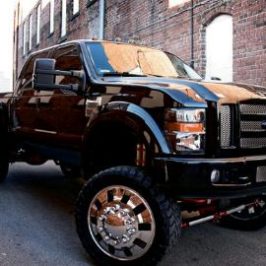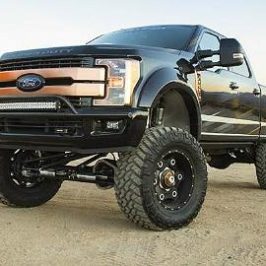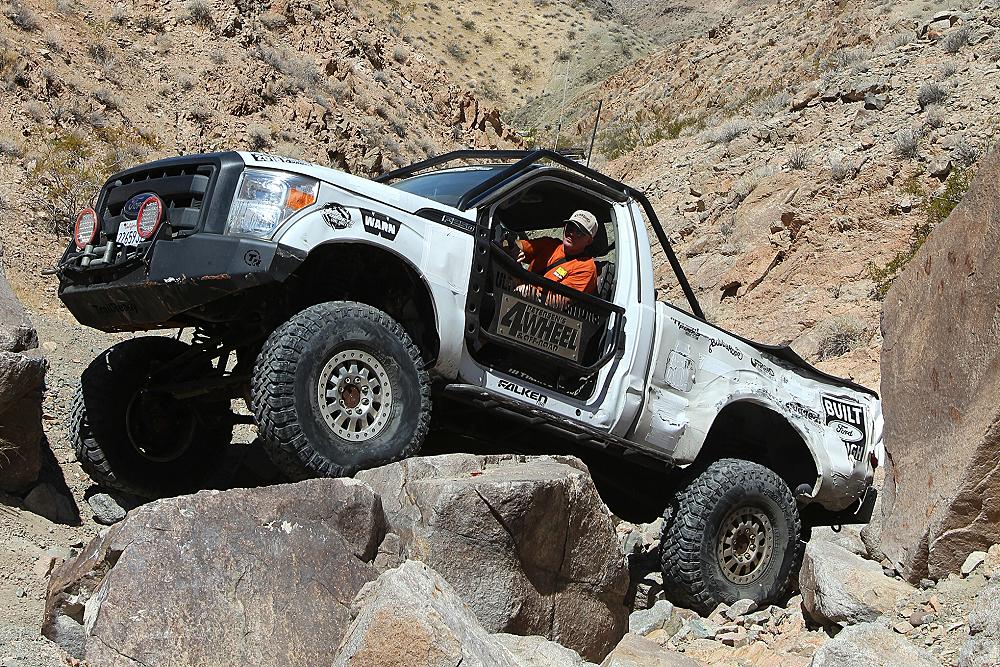
Every year, 4-Wheel & Off-Road Magazine (4WOR) hosts an ‘Ultimate Adventure’, and each year they build an official vehicle to lead it. I thought it would be interesting to take a look back at the 2013 Ford F-250 Super Duty 4×4 that they built to lead the 2013 Ultimate Adventure. The Ultimate Adventure is a week long off-road trip they take each summer with sponsors, cronies, and select invited readers.
4WOR started with a basic F-250 Super Duty XL package. Super Duty trucks have many great starting components like Dana 60 front axles, optional locking rear differentials, and selectable hubs. The Super Duty’s 6.7L Power Stroke pumps out 400 horses and 800 lb-ft of torque.
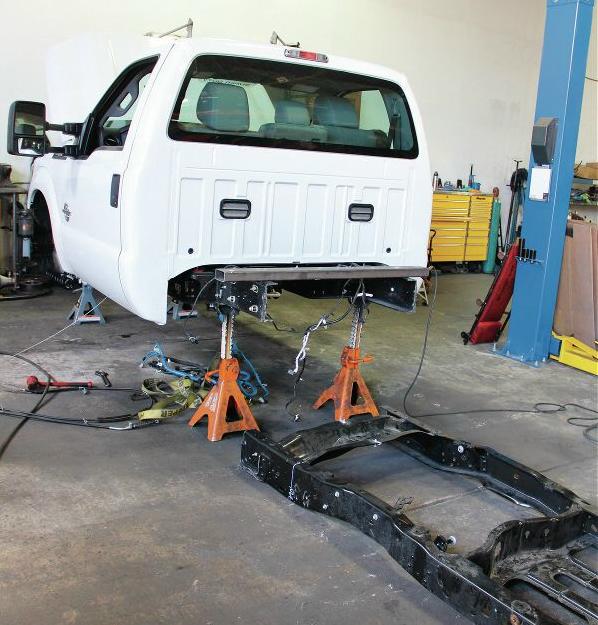
The frame was cut off behind the cab, and the removed section was shortened 16-1/2 inches before being re-attached.
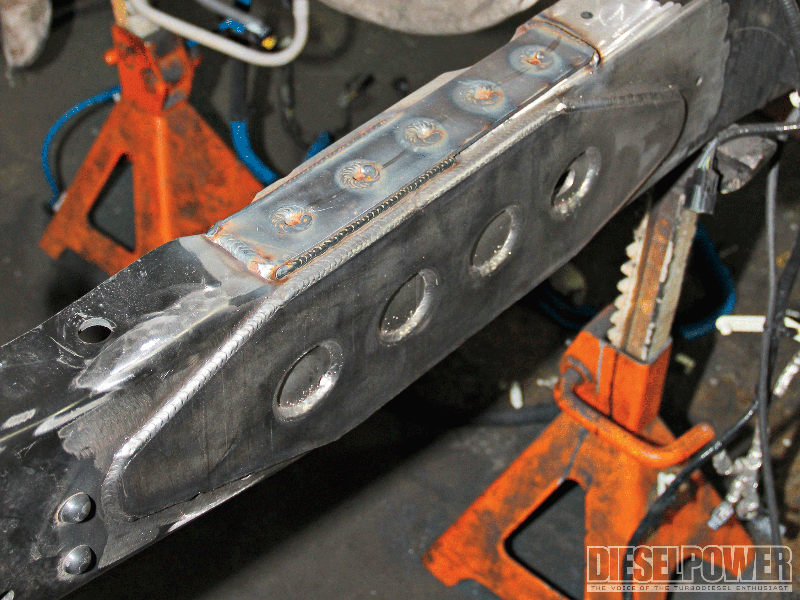
When the frame was welded back together, fish plates made of 3/16-inch steel was used on both sides of the seam, plus the top and bottom of the framerails to add strength. Cutting the frame allowed them to shorten it and build a regular cab shortbed, which wasn’t offered from the factory.
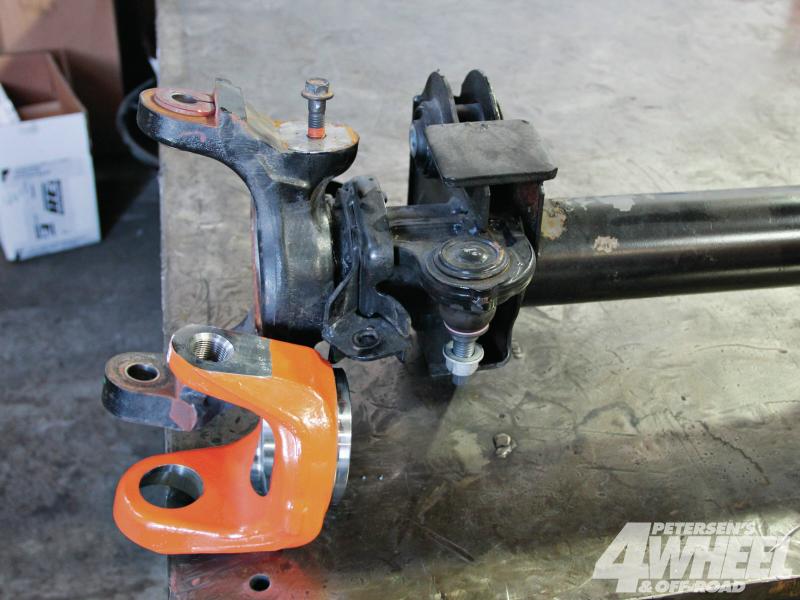
The old inner C was removed from the Dana 60 front axle, and replaced with king pin style C’s from Reid Racing. These were necessary to convert to portal gearboxes from Axletech.
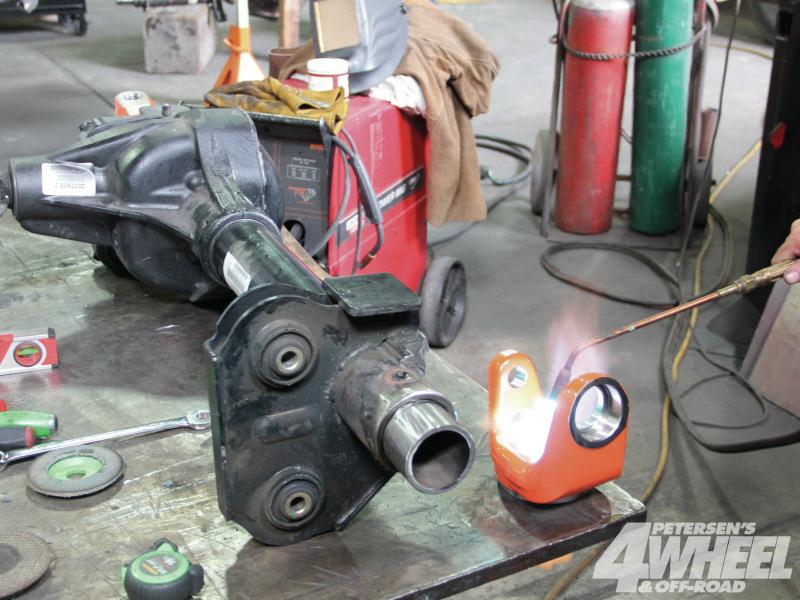
The factory axle tube was sleeved with a short segment of smaller-diameter tubing, which the new Reid Racing C was slid on to. This allowed the use of a C with a smaller inner diameter for additional strength, and adds strength to the tube by increasing the effective wall thickness.
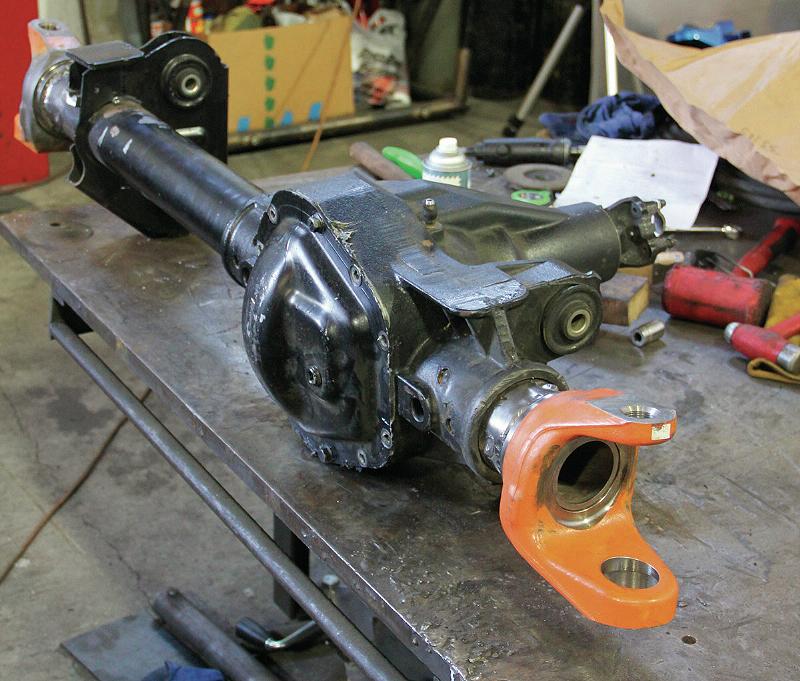
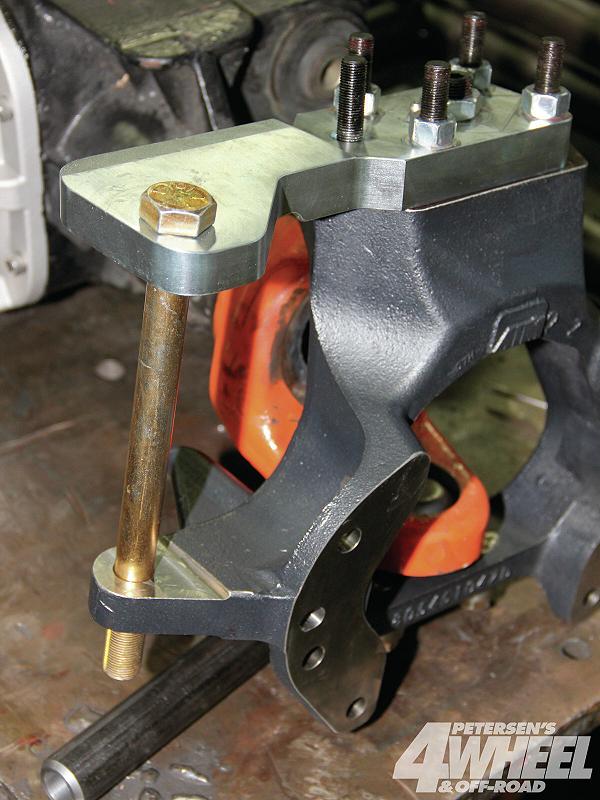
The Axletech portals attach to the front axle with a special cast inner knuckle that adapts the gearbox to the Reid Racing C.
The Artec steering arms tie the high steer arm into the standard lower steering arm in either a factory or the Axletech steering knuckle. This keeps the Heim joints on the tie rod and drag link in double shear.

Nitro Gear & Axle is the official gear and axle of Ultimate Adventure. 4WOR went through the company’s listings of axleshafts and chose a chromoly 15.96-inch Dodge short shaft, and a 38.06-inch chromoly long side shaft from a ’94-’99 Dodge truck for their Dana 60. When cutting the axle tube and adding the Reid Racing C’s, the Dodge axleshafts were used for calculating how much axle tube to remove.
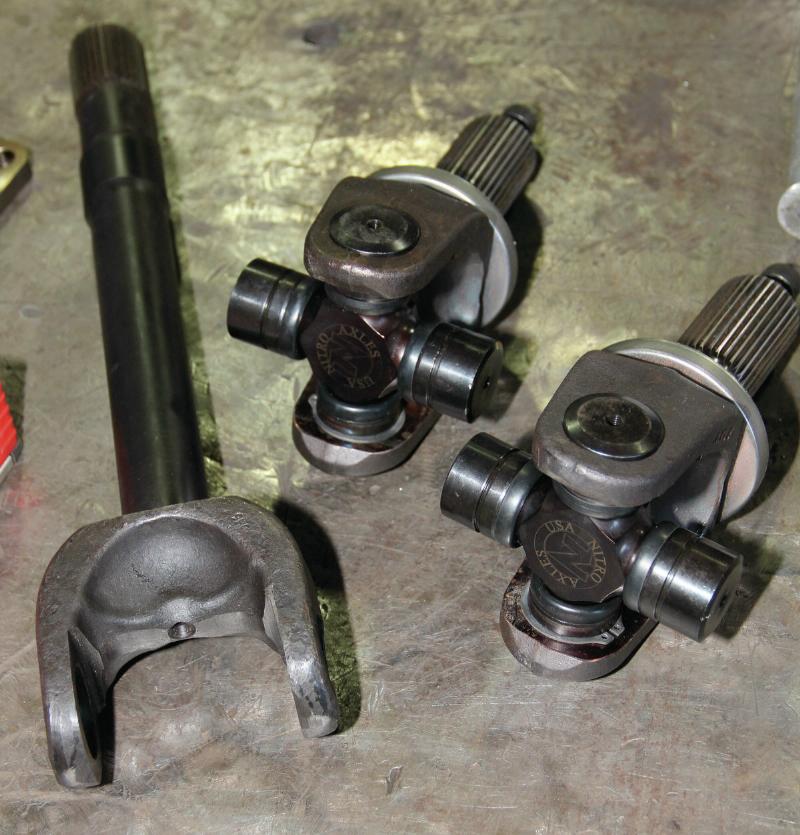
The Axletech portals come with their own front stub shafts, and were fitted to the inner axles with Nitro’s made-in-the-USA Excaliber U-joints.
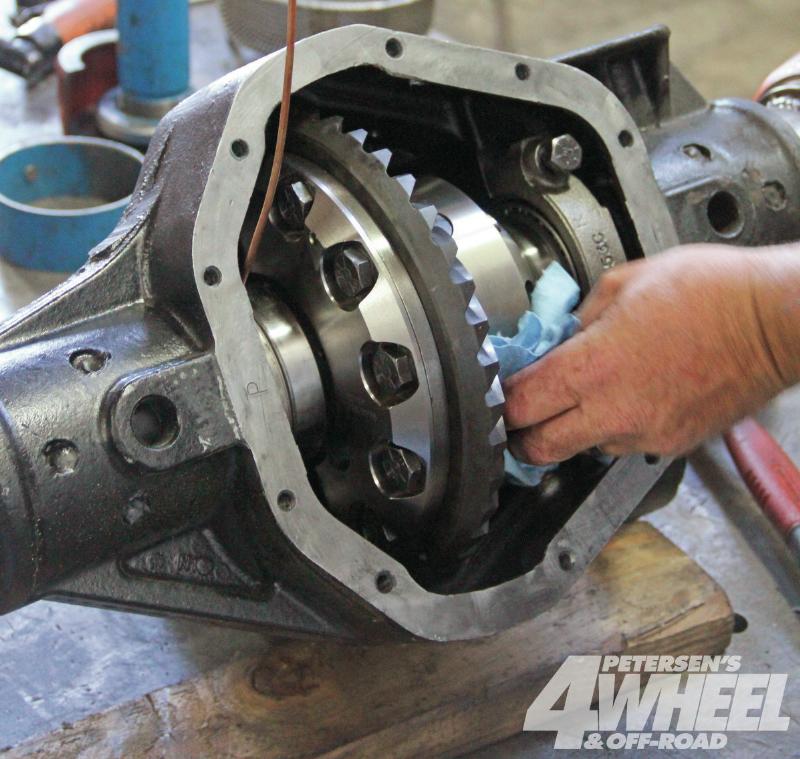
The front and rear axles were stuffed with ARB Air Lockers, but the stock 3.55 gear ratio was retained.
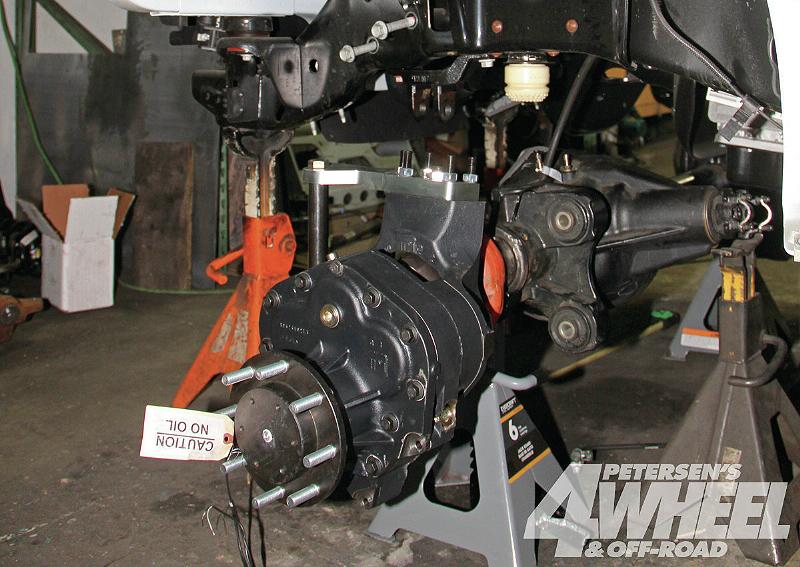
The front axleshafts were installed and the Axletech portal boxes bolted on. The portal boxes have four massive gears inside: a drive gear attached to the stub shaft, two idler gears, and a driven gear that attaches to the wheel hub. Final gear ratio is 1-1/2 times the factory 3.55 ring-and-pinion, or 5.32:1, plus the portal adds 5-inches of ground clearance to the differentials. And since the wheel mount surface has been lowered, less suspension lift is required to clear big 40-inch Nittos.
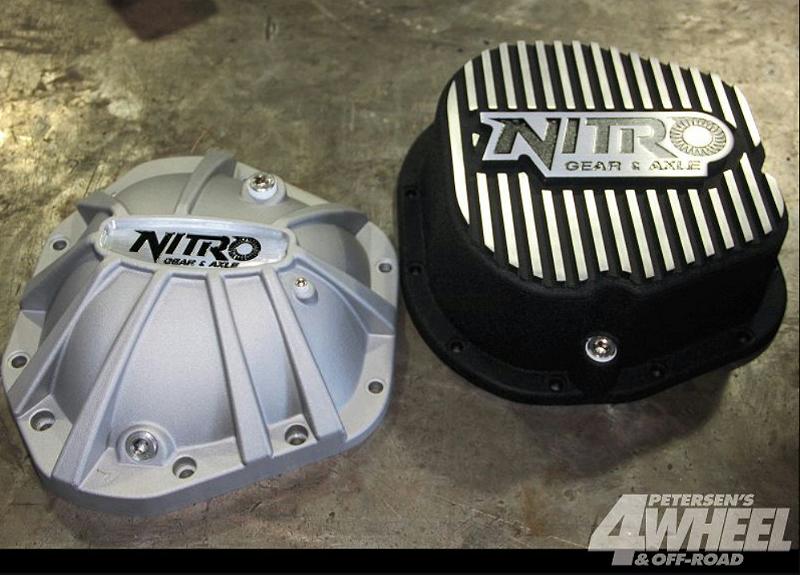
The front and rear axles were fitted with Nitro differential covers. The covers are made of thick aluminum and have fill and drain plugs.
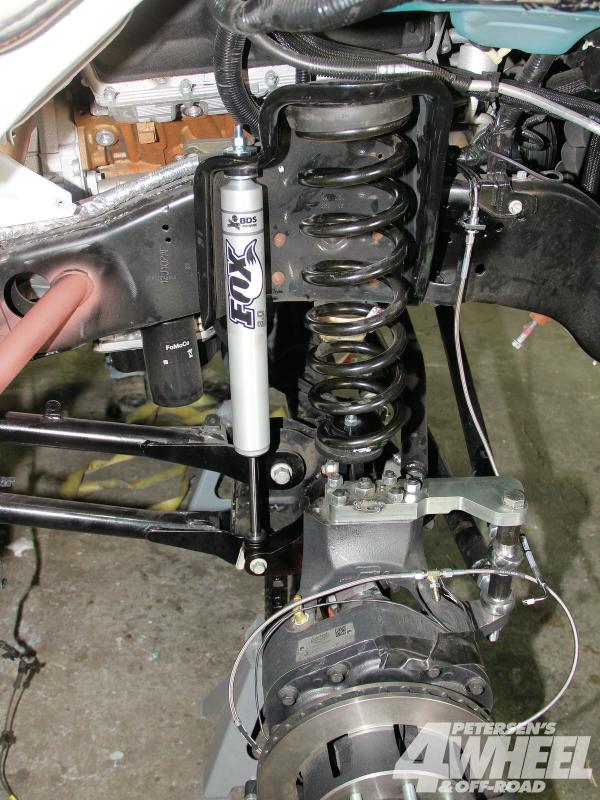
The front suspension received BDS 4-inch suspension coils along with a BDS 4-link kit and BDS Fox shocks. The combined 9-inched of clearance (4-inch suspension & 5-inches from the portals) made room for the 40-inch Nitto Trail Grapplers.
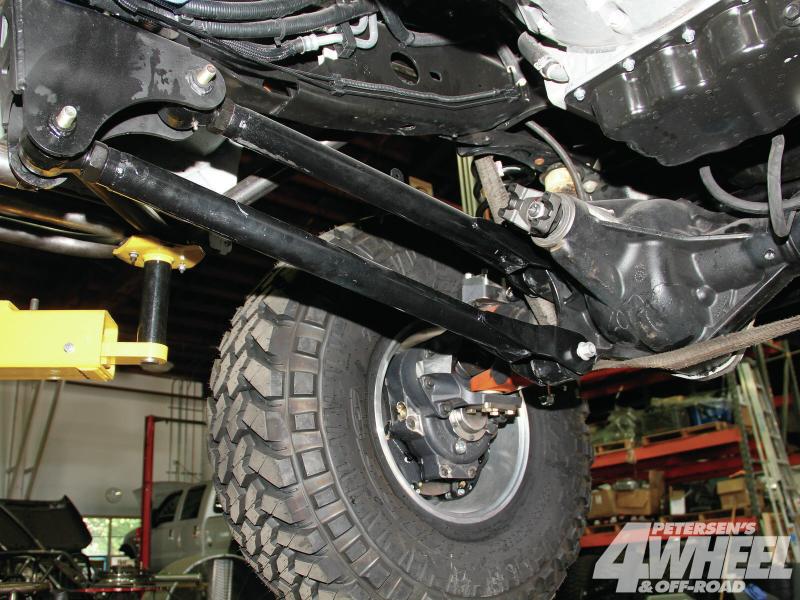
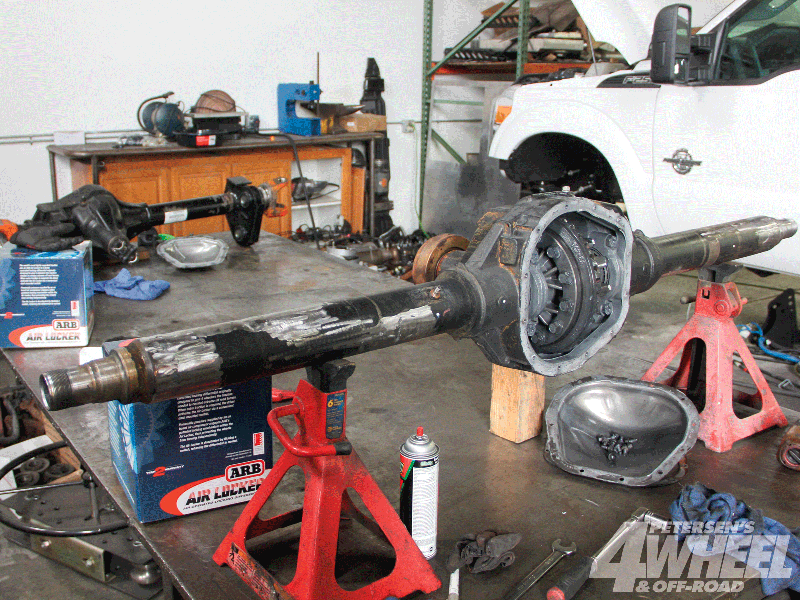
The rear Sterling 10.5 axle also received portals, but 4WOR needed a rough estimate of how wide the front would be before they could finish building the rear. They started by stripping off the hub, brakes, and old axleshafts. The portals come with new rear axleshafts, and they decided to build the rear axle just slightly narrower than the front. They cut off 6-1/2 inches from the end of the spindle, which resulted in the rear axle being 2-inches narrower than the front.
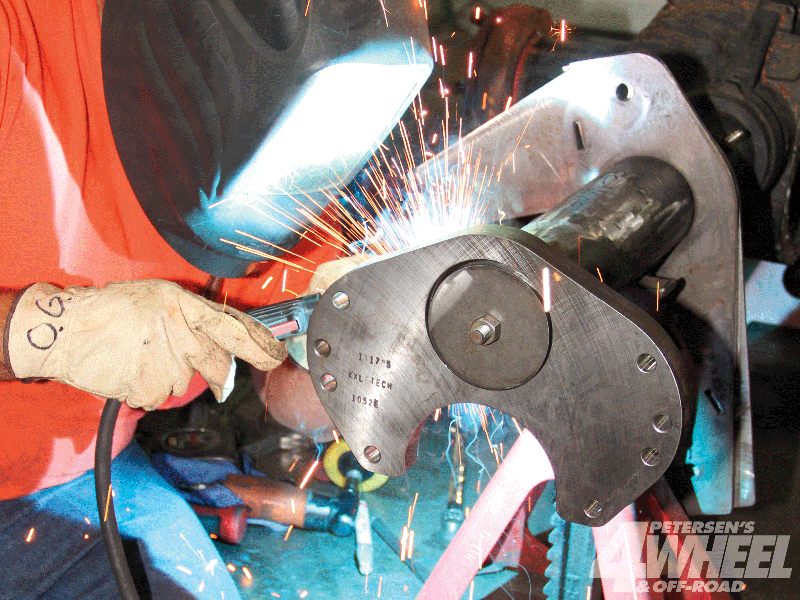
The rear suspension mounts were slid on to the axle tube, and then the adapter plate for the portals were set with 3 degrees of up angle before being welded in place. The massive weld between the thick axletube and the thick adapter plate is strong, but they eventually added multiple gussets to help strengthen the axlehousing against twisting from the leverage of the portals.
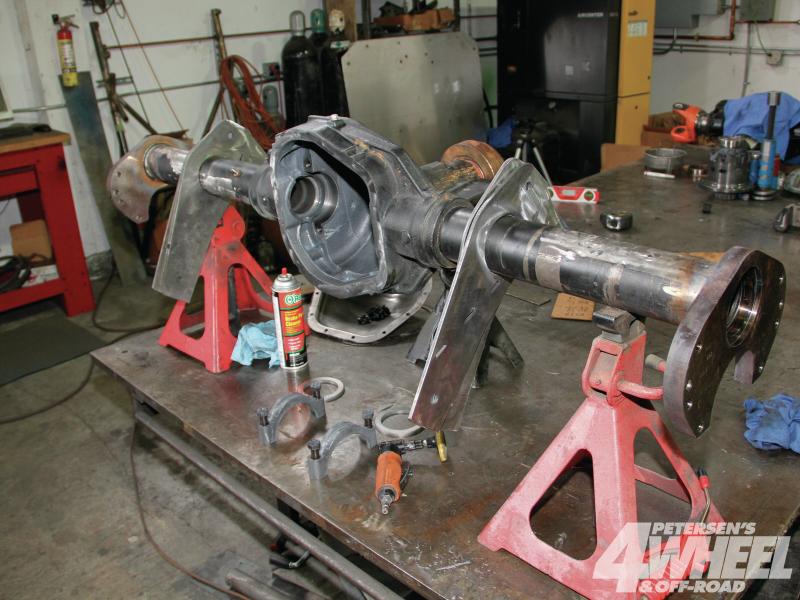
The rear axle was allowed to cool and then prepared for reassembly. The 1/4-inch plates hanging on the tubes are the start of the rear axle link and coil mounts. They opted for a linked rear suspension to better control the leverage of the portals versus the leaf springs.
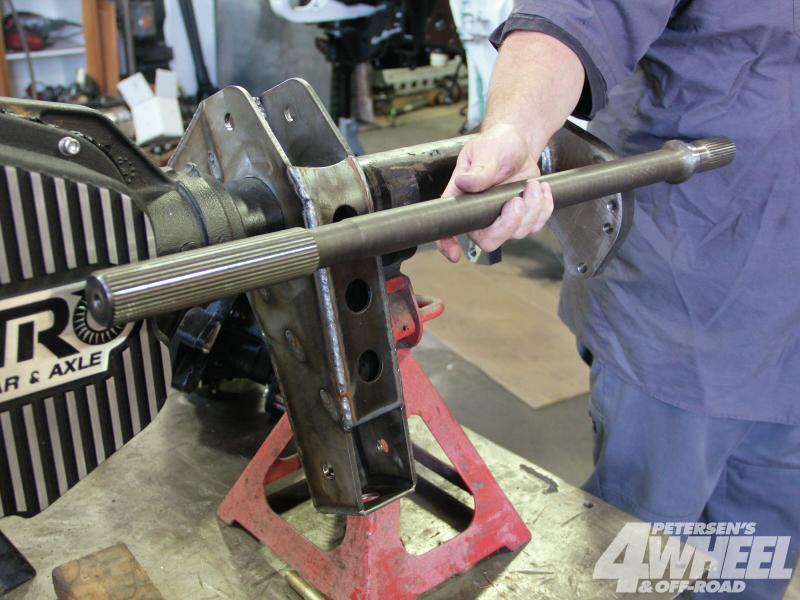
The Axletech rear shafts have extra long splines so they could have built the axle narrower if they wanted to. As it turned out, they only had to trim them 1/4-inch to fit. The axle was finished off with an ARB Air Locker and Nitro differential cover.
They added the O-ring to the end of the 35-spline axleshaft, and slid it into the rear end, then added silicone to the adapter plate and portal box to guarantee against leaks. Dowel pins help align the portals.
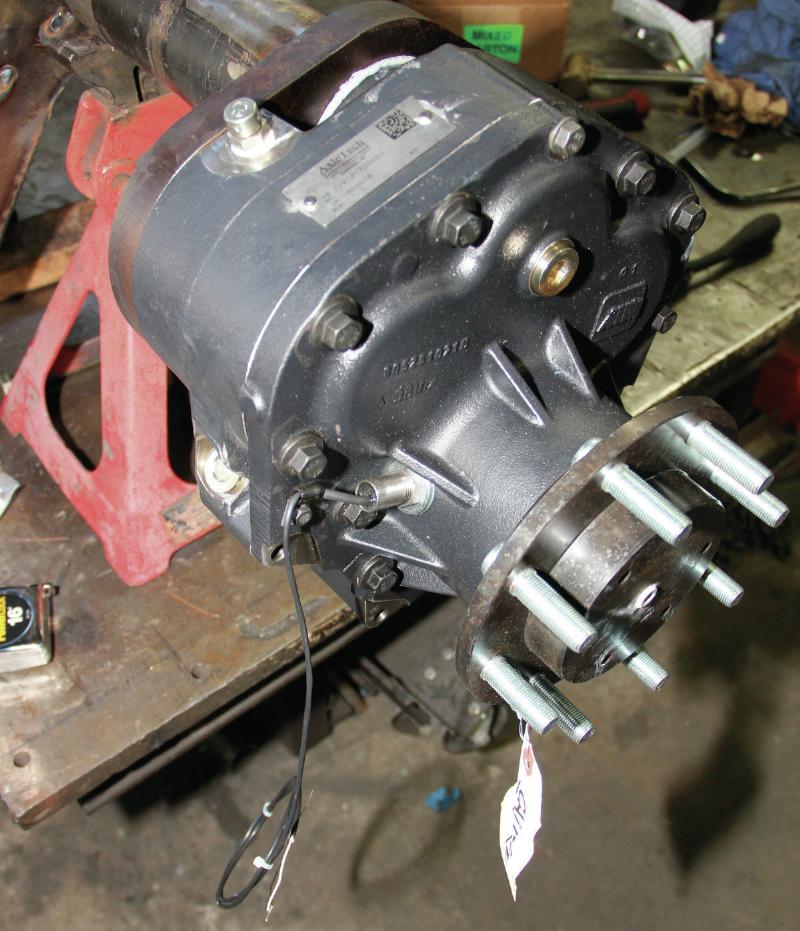
Note the wires to the newly offered speed sensors within the portal. The axles are not light (700 pounds?), but the gearing, strength, reduction of upstream stress by adding the portals, increased traction from the ARBs, and ground clearance all make them perfect for this big truck.
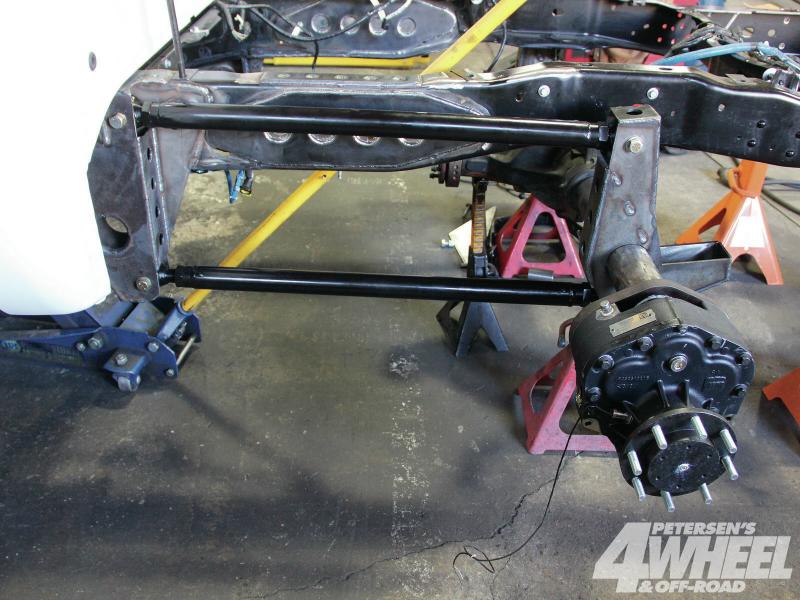
A rear equal-length parallel four-link with track bar setup was chosen to best control the portals. With 14-inches of separation at the frame end, the link mounts appear to hang down low and decrease ground clearance. Since the frame actually kicks up very high under the bed and the fuel tank, transmission, and exhaust all hang down low under the frame rails, it wasn’t really as low as it seemed. They did lose a slight bit of ground clearance by mounting the lower links a few inches below the axletube, but they opted for strength over ground clearance. The axle link mounts have a rear step that will become the coil mount.
Thick 1/4″x2″-wall tubing was used for the rear links, and threaded BDS bungs were welded in to receive the BDS Flex Joints. Both ends of the links run right-hand threaded bungs. This makes adjusting lengths a hassle, but it also makes the links impossible to unthread by accident, which can happen with opposite-threaded bungs on both ends, and cuts down on the number of spares they need to carry.
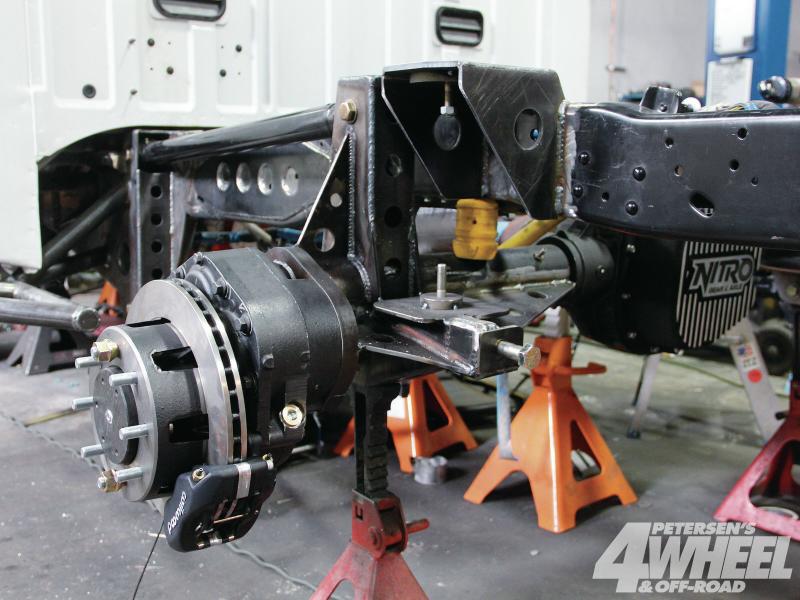
The driver-side rear axle mount includes both upper and lower link mounts, the coil mount off the back, an integrated track bar mount, and multiple gussets to keep everything together. The mounts are built of a mixture of 1/4″ and 3/16″ inch plate. The frame mount will support the coil but must stay under the floor of the truck bed.
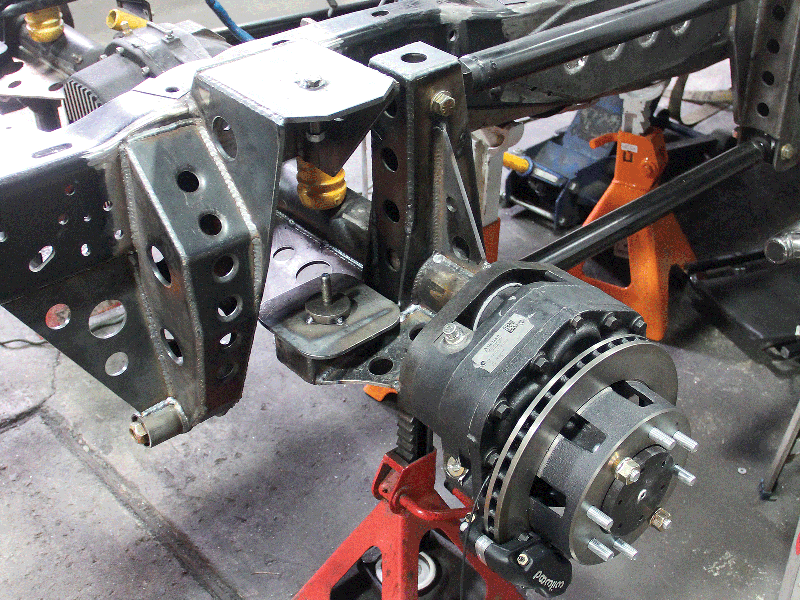
The passenger-side rear is even more complex with the heavy-duty track bar mount built off the bottom of the frame in order to keep the track bar close to flat at ride height, but beefy enough not to rip off the frame. They also added the rotors and Wilwood calipers to the portal gearboxes.
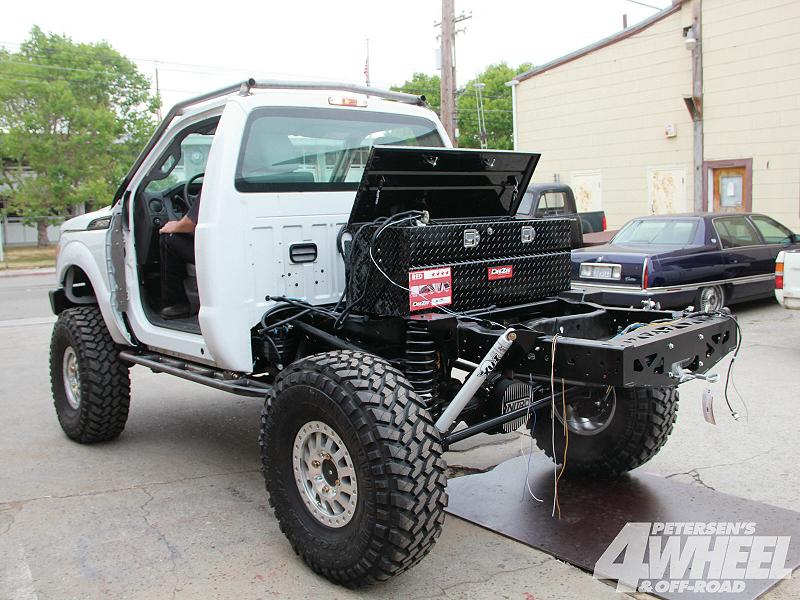
The rear BDS Fox shocks were mounted behind the axle to clear the suspension at full compression. Rear coils are BDS front lift coils for a fullsize Bronco.
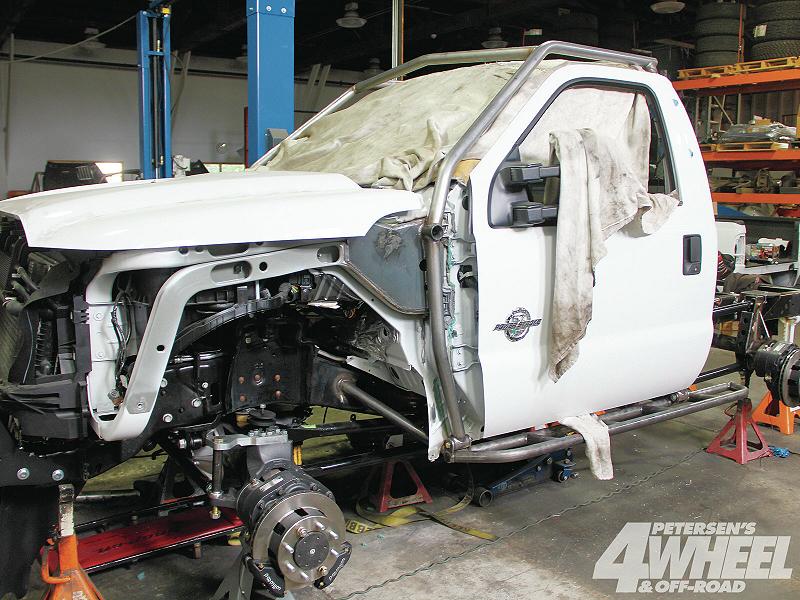
An interior / exterior cage was built that was hidden inside the factory B-pillar, but visible above the A-pillar and roof.
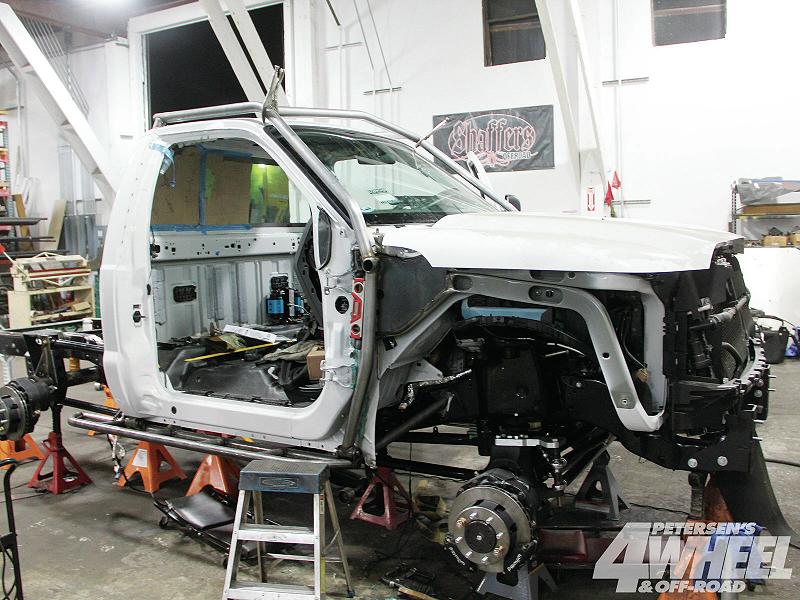
The front section of the cage hides behind the front fender, but still ties into the complex steel body structure, and to the front rock rails via bushings. Having the external cage by the windshield protects the glass from protruding branches and brush off-road.
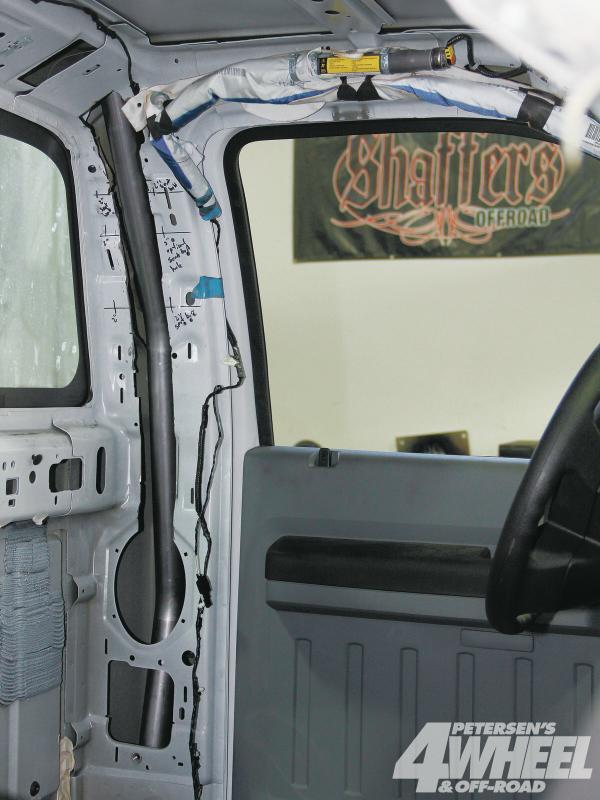
One of the coolest parts of the build is where the cage comes down inside the B-pillar. This can still be covered by the factory plastic paneling so that there is only one bar (a crossbar not yet installed in this photo) inside the cab of the truck to help save room and give it a clean look.
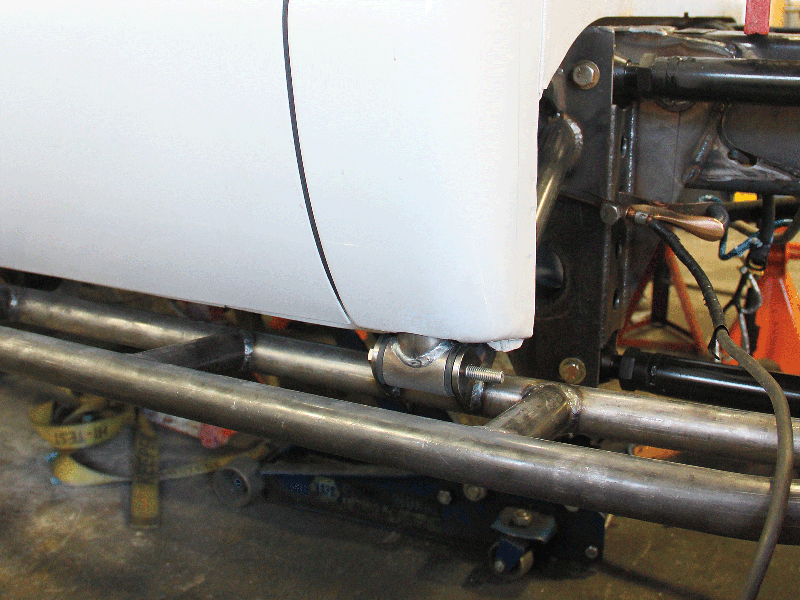
The cage is tied into the cab, but also attaches to the frame and rock rails via bushings. This allows the cage to move ever so slightly with the body while still offering protection in a rollover.
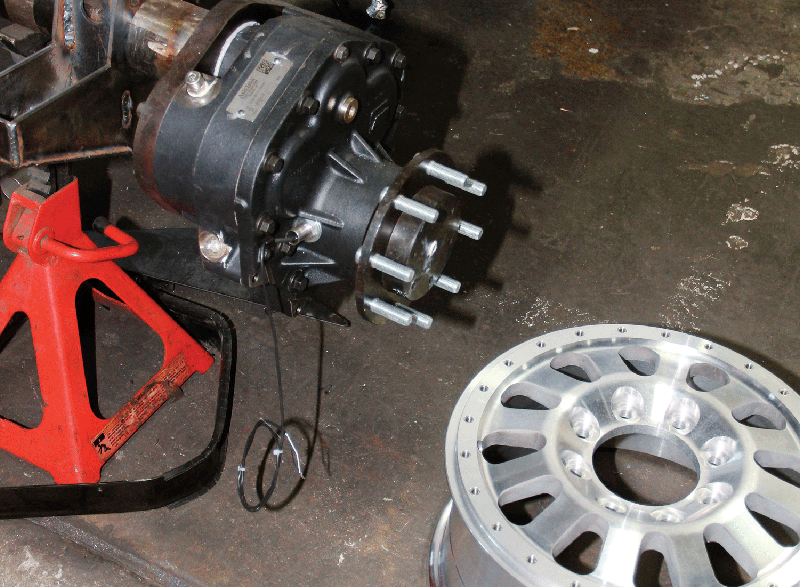
GT/Cepek wheels were used to fit the portal gear boxes. These off-road–only beadlock wheels are designed for H1 Hummers and are available with 7 or 8 inches of backspacing and an 8 on 6-1/2 bolt pattern. The 17 x 8-1/2 cast aluminum wheels have a thick mounting face, steel threaded inserts for the beadlock rings, and an inner safety bead like DOT wheels, and they also have an inner liner seat for off-road racing.
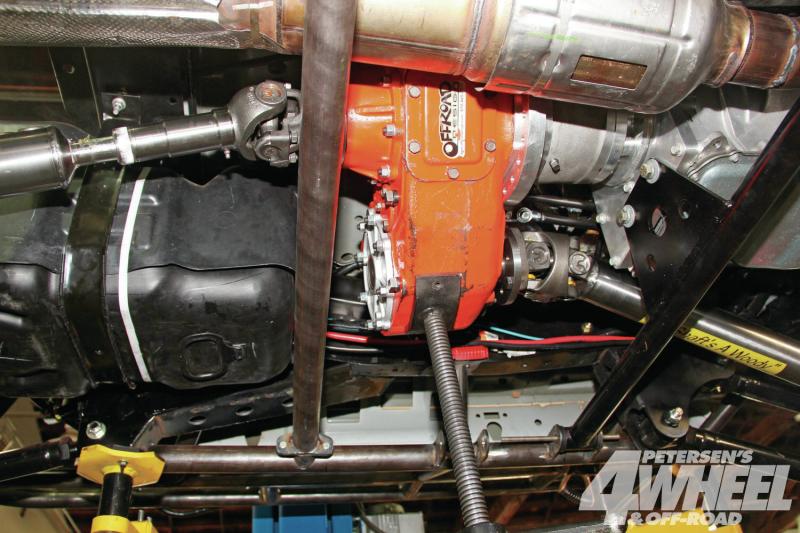
An Offroad Design Magnum 205 transfer case was used (along with an adapter). The Magnum 205 has a six-pinion planetary reduction box in front of a standard 205 transfer case (in this case, a Ford driver’s drop case). The Magnum is 6-1/4 inches long in front of the 16-inch-long 205 transfer case. The Magnum offers a 1:1 high range, a 1.96 midrange, a 2.72 low range, and a 5.33 compound low range. Driveshafts are by Tom Woods.
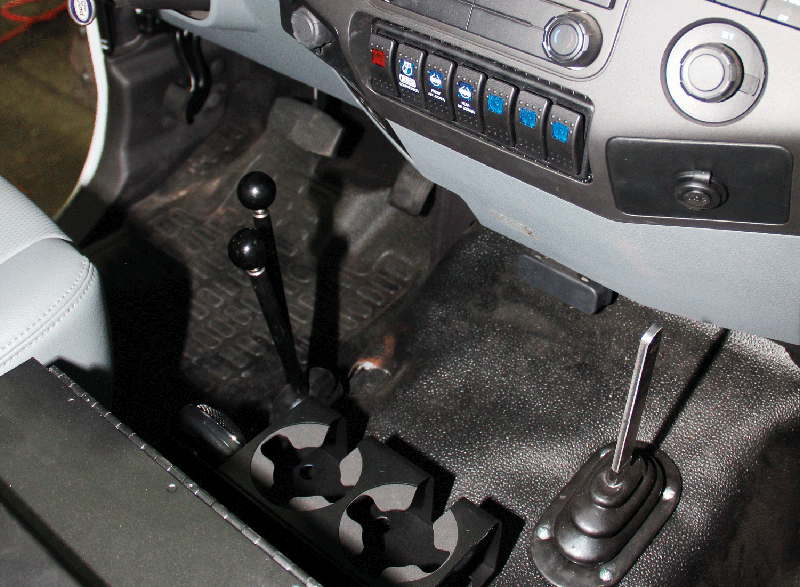
Inside the cab, two levers activate the 205, and a third engages the Magnum reduction box. Note the switch panel added to the dash. The first big red switch tells the computer when the transfer case is in two-wheel drive, four-wheel drive, or four-wheel drive low, since the 205 didn’t come with an activation switch. The other switches control the ARB air compressor, front and rear lockers, and off-road lights via an sPOD electrical box.
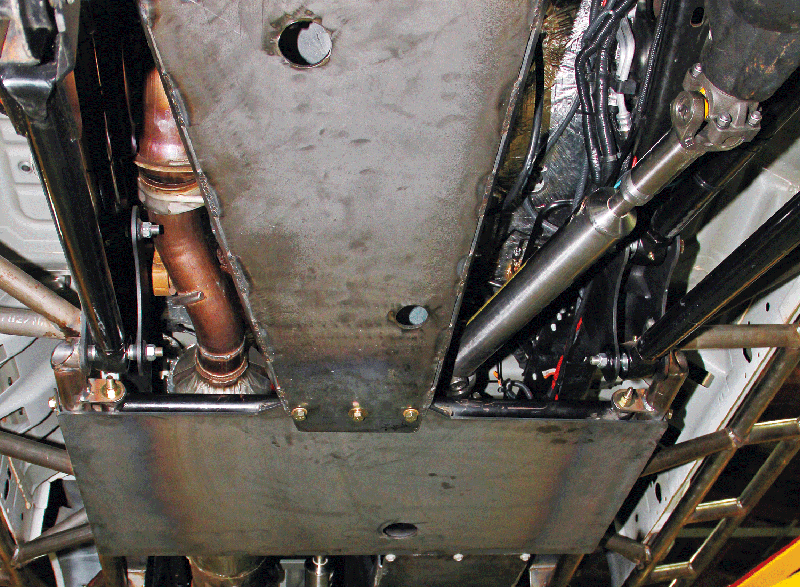
Beefy skid plates were made out of 1/4″ steel plate.
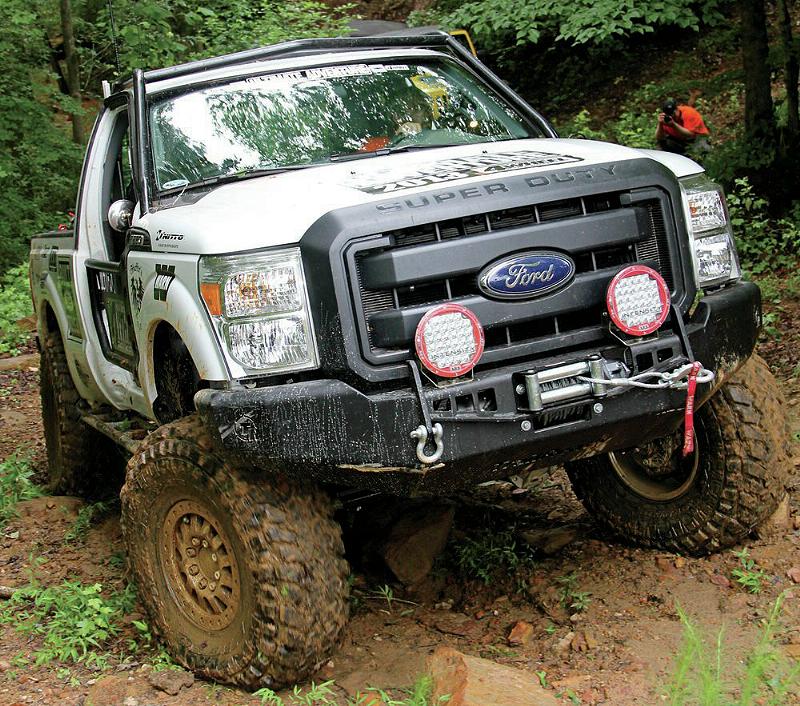
A TrailReady bumper was added to the front with a Warn 16.5 winch and ARB Intensity LED lights.
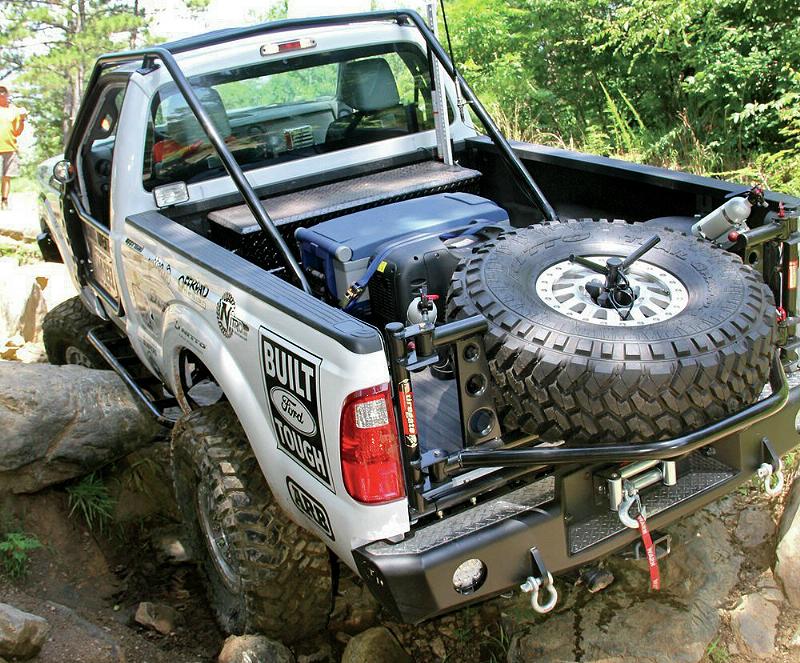
A rear TrailReady bumper was added along with a Zeon 12,000 lb winch.
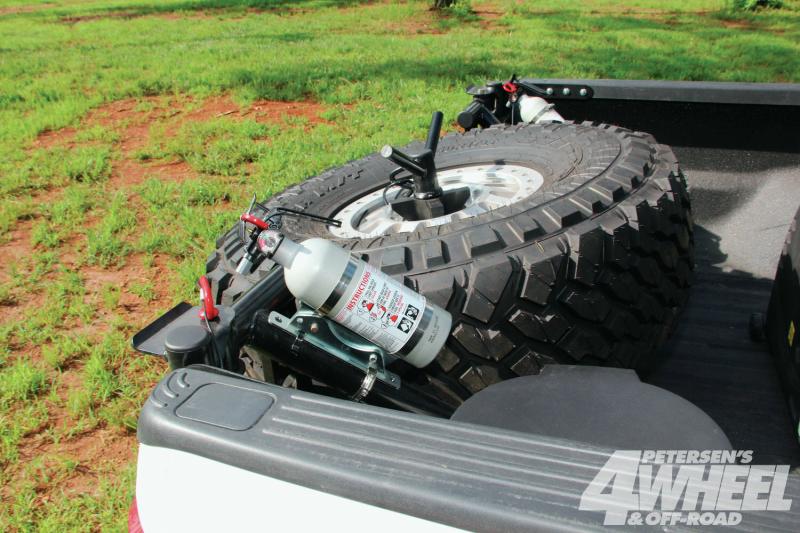
A 40-inch Nitto spare is mounted to a Tire Gate tire carrier.
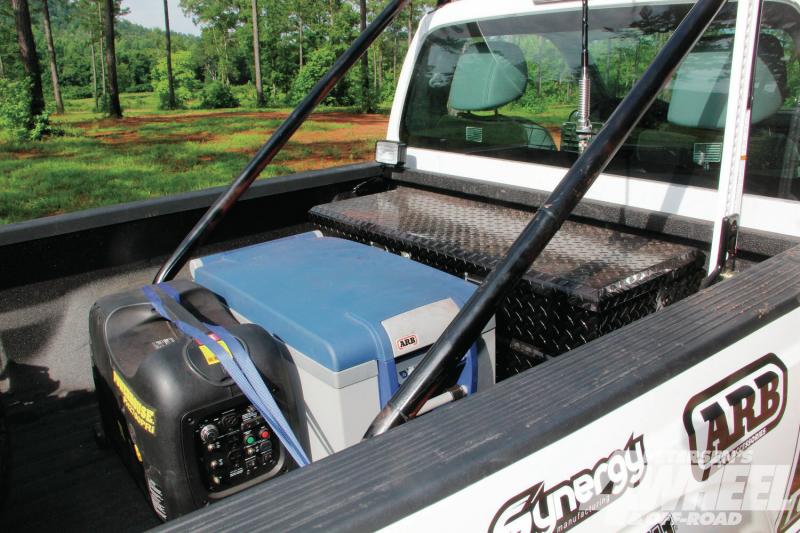
A Powerhouse generator, an ARB 63-quart fridge, and a set of fire extinguishers are mounted in the bed.
Resource:
This has been more of an overview of this project build. To see more photos and information, check out the links listed below:
2013 FORD F-250 – PROJECT SUPER DIRTY: PART 1
2013 FORD F-250 – PROJECT SUPER DIRTY: PART 2
2013 FORD F-250 – PROJECT SUPER DIRTY: PART 3
2013 FORD F-250 – PROJECT SUPER DIRTY: PART 4
2013 FORD F-250 – PROJECT SUPER DIRTY: PART 5
2013 FORD F-250 – PROJECT SUPER DIRTY: PART 6
2013 FORD F-250 – PROJECT SUPER DIRTY: PART 7
Action Photos:

